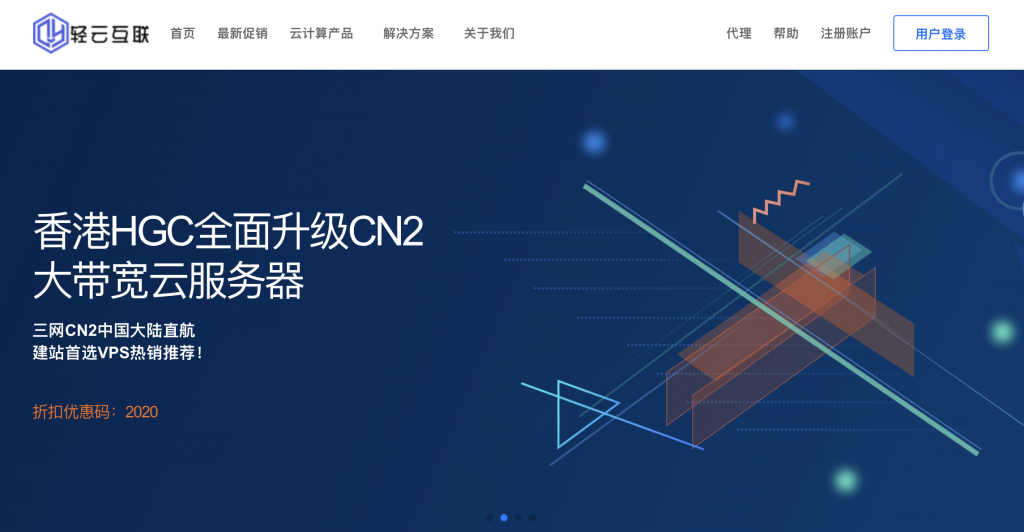stractionwww.88ququ.com
www.88ququ.com 时间:2021-03-21 阅读:()
RESEARCHARTICLEOpenAccessEffectofafacility-basedmultifacetedinterventiononthequalityofobstetricalcare:aclusterrandomizedcontrolledtrialinMaliandSenegalCatherineMPirkle1,2,3*,AlexandreDumont4,MamadouTraoré5,Maria-VictoriaZunzunegui2,3andfortheQUARITEgroupAbstractBackground:MaternalmortalityinreferralhospitalsinMaliandSenegalsurpasses1%ofobstetricaladmissions.
Poorqualityobstetricalcarecontributestohighmaternalmortality;however,poorcareisoftenlinkedtoinsufficienthospitalresources.
Onepromisingmethodtoimproveobstetricalcareismaternaldeathreview.
Withaclusterrandomizedtrial,weassessedwhetheranintervention,basedonmaternaldeathreview,couldimproveobstetricalqualityofcare.
Methods:Thetrialbeganwithapre-interventionyear(2007),followedbytwoyearsofinterventionactivitiesandapost-interventionyear.
Wemeasuredobstetricalqualityofcareinthepost-interventionyearusingacriterion-basedclinicalaudit(CBCA).
Wecollecteddatafrom32ofthe46trialhospitals(16ineachtrialarm)andincluded658patientsadmittedtothematernityunitwithatrialoflabour.
TheCBCAquestionnairemeasured5dimensionsofcare-patienthistory,clinicalexamination,laboratoryexamination,deliverycareandpostpartummonitoring.
WeusedadjustedmixedmodelstoevaluatedifferencesinCBCAscoresbytrialarmsandexaminedhowlevelsofhospitalhumanandmaterialresourcesaffectqualityofcaredifferencesassociatedwiththeintervention.
Results:Forallwomen,themeanpercentageofcarecriteriametwas66.
3(SD13.
5).
ThereweresignificantlygreatermeanCBCAscoresinwomentreatedatinterventionhospitals(68.
2)comparedtocontrolhospitals(64.
5).
Afteradjustment,womentreatedatinterventionsiteshad5points'greaterscoresthanthoseatcontrolsites.
Thisdifferencewasmostlyattributabletogreaterclinicalexaminationandpost-partummonitoringscores.
Theassociationbetweentheinterventionandqualityofcarewasthesame,irrespectiveofthelevelofresourcesavailabletoahospital;however,asresourcesincreased,sodidqualityofcarescoresinbotharmsofthetrial.
Conclusions:PatientstreatedathospitalswithmaternaldeathreviewhadgreaterCBCAscoressuggestingthattheinterventionimprovesqualityofcare.
Resultsindicatethattheinterventionmostlyimprovesclinicalexaminationatadmissionandpost-partummonitoring.
Theyalsoindicatethatqualityofcarescorescanbemaximizedbyincreasingtheavailabilityofhumanandmaterialresourcestohospitalsintheregion.
Trialregistration:TheQUARITEtrialisregisteredontheCurrentControlledTrialswebsiteunderISRCTN46950658Keywords:Maternaldeathreview,Criterionbasedclinicalaudit,Qualityofcare,Obstetrics,WestAfrica*Correspondence:catherine-mclean.
pirkle.
1@ulaval.
ca1ResearchCentreoftheUniversityHospitalCentreofQuebec(CHUQ),2875boulevardLaurier,dificeDeltaII,Bureau600,6eétage,Québec,QuébecGIV2M2,Canada2DepartmentofSocialandPreventiveMedicine,UniversityofMontreal,Montreal,CanadaFulllistofauthorinformationisavailableattheendofthearticle2013Pirkleetal.
;licenseeBioMedCentralLtd.
ThisisanOpenAccessarticledistributedunderthetermsoftheCreativeCommonsAttributionLicense(http://creativecommons.
org/licenses/by/2.
0),whichpermitsunrestricteduse,distribution,andreproductioninanymedium,providedtheoriginalworkisproperlycited.
Pirkleetal.
BMCPregnancyandChildbirth2013,13:24http://www.
biomedcentral.
com/1471-2393/13/24BackgroundEachday,800womenworldwidedieduringpregnancyorofchildbirth-relatedcauses.
Mostmaternaldeathsoccurinsub-SaharanAfrica[1].
Globally,itisrecognizedthatsignificantinroadsinmaternalmortalitycannotbemadewithoutdramaticallyincreasingaccesstoemergencyobstet-ricalcare(EmOC)[2].
HospitalscapableofbasicEmOCshouldprovideparentalantibiotics,anticonvulsants,andoxytocics,aswellasbeabletomanuallyremovethepla-centaandretaineduterineproducts,andperformassisteddeliveries.
ComprehensiveEmOCsitesalsoperformcaesar-eansectionsandbloodtransfusions[3].
Yet,inmanyplaces,thenumbersofmaternaldeathsoccurringinhealthfacilitiesprovidingEmOCareunacceptablyhigh.
InMaliandSenegal,overonepercentofwomendiegivingbirthinreferralhospitalsacrosstheregion,inplaceswherecom-prehensiveEmOCisavailable[4].
Suchhighcasefatalitysuggeststhatpoormedicalpracticemaycontributetoma-ternalmortality,alongwithotherfactorssuchaslongtraveltimesandlaterecognitionofobstetricalcomplications.
Whileelevatedfacilitymaternalmortalityindirectlysuggestsdeficienciesinqualityofcare,littleworkintheregionhasdirectlymeasuredtheproblem.
AnthropologistsworkinginfiveWestAfricancapitalcitieshavedocu-mentedshockingdeparturesfromqualityobstetricalcare.
Theserangedfromgrossneglecttophysicalviolenceagainstpatients[5].
Additionally,limitedquantitativeevi-dencehasindicatedthatover70%ofmaternaldeathsintheregioncouldbeavoidedwithbetterqualitycare[6].
Whilesobering,thisworkdoesnotquantifytheamplitudeofthequalityproblemnorgivehealthprofessionalscon-cretesuggestionsonhowtoimproveobstetricalpractice.
Recently,therehasbeensubstantialinterestinemployingmaternaldeathreview(MDR)toimproveobstetricalqualityofcareandreducematernalmortality[7-10].
MDRareauditsofmaternaldeathsinwhichallhealthcarestaffinvolvedinthemanagementofaparticularpatientdiscussthecircumstancesofthedeathandhowcarecouldhavebeenimproved.
Duringtheaudit,recommendationstoim-provefuturepatientcarearemade[7].
InSenegal,apilotstudyusingMDRshoweda50%reductioninmaternalmortality[11].
MDRarebelievedeffectiveatimprovingob-stetricalcarebecausetheydrawhospitalstaffattentiontotheproblemofmaternalmortality,highlightqualitygaps,andemphasizefindingsolutionsthatarerealisticinagivensetting.
Overall,theyarebelievedtoincreaseprovideraccountability.
InSeptember,2007,theQUARITEclusterrandomizedtrialwasinitiatedtoassesstheeffectofamultifacetedintervention,theALARMInternationalProgram,onre-ducingfacilitymaternalmortality[4].
ThehallmarkoftheinterventionisMDR.
Otheraspectsoftheinterven-tionincludeworkshopsonobstetricalbestpracticesandperiodicvisitstoALARMsitesbyinternationalexperts.
ItisbelievedthattheworkshopsandinternationalvisitsfacilitateMDRbyprovidinghealthcareprofessionalswiththeknowledgeandconfidencetomakequalityimprovementsuggestionsduringthereviews.
Inall,theALARMprogramtargetsheathprofessionalsinmaternityunitsandisbelievedtoreducematernalmortalitybyim-provingqualityofcare,throughbetterobstetricalpractice.
Forthetrial,werandomlyallocatedtheALARMinterven-tiontoreferralhospitalsintheregion.
Toavoidcontamin-ationbetweenhealthprofessionals,andbecausetheinterventiontargetsteamsofprofessionals,aclusterde-signwasdeemedmoreappropriatethananindividualrandomizedcontrolledtrial.
MethodsTheQUARITEtrialbeganinSeptember2007andwascompletedinDecember2011.
Itconsistedofaone-yearpre-interventionperiod,atwo-yearinterventionperiod,andafinalyearpost-interventionperiod.
Adetailedde-scriptionofthetrialdesignandobjectiveshasbeendescribedelsewhere[4].
Thetrialreceivedethicscommit-teeapprovalfromSainteJustineHospitalinMontreal(ref.
2425),theMinistryofHealthandPreventiveMedicineinSenegal(ref.
0869),andtheNationalEthicsCommitteeforHealthandLifeSciencesinMali(ref.
034/MS-SG-CNESS).
Informedconsentwasobtainedfromeachhospitalincludedinthetrial.
SettingTheQUARITEtrialtookplaceinreferralhospitalsinMaliinSenegal.
Referralhospitalsareevacuationsitesforcomplicateddeliveriesandintheory,shouldhavesufficientinfrastructuretoprovidecomprehensiveEmOCincludingcaesareansectionandbloodtransfusion[3].
Inbothcoun-tries,therearesufficientnumbersofcomprehensiveEmOCfacilitiesforthepopulation,thoughruralareasareunderserved[12].
InMali,approximately45%ofwomengivebirthinabasicorcomprehensivehealthfacilityandofthosewhosebirthswereassistedbyahealthprofessional,2%receivedacaesareansection[13].
InSenegal,there-spectiveproportionsare62%and3%[14].
ParticipantsAsthisisaclusterdesign,eligibilitycriteriaapplytoboththehospitalandpatientlevelsofanalysis.
TobeeligiblefortheQUARITEtrial,thereferralhospitalneededtohavecomprehensiveEmOCcapacity(i.
e.
afunctioningsurgicaltheatreandbloodtransfusioncap-acity)andatleast800birthsperyear.
Wefocusedonhighvolumehospitalsinordertohaveenoughmaternaldeaths(maintrialoutcome)andbecausethehealthsys-temisorganizedinapyramidalfashion.
Thatis,lowerorderhealthcentresrefercasesofcomplicationuptohigherlevel,largerfacilitiesthat,intheory,shouldbeablePirkleetal.
BMCPregnancyandChildbirth2013,13:24Page2of13http://www.
biomedcentral.
com/1471-2393/13/24toabletotreatlife-threateningobstetricalcomplications.
QUARITE'seligibilitycriteriahavebeendescribedindetailelsewhere,andatotalof46ofthe49eligiblereferralhospitalswereincludedinthetrial[4].
Forthepresentstudyandanalyses,allwomenadmittedtohospitalwithatrialoflabourandafoetusofatleast500gmswereeligibleforthissub-study.
Womenadmittedforelectivecaesareansectionwerenotincluded,becausetheydidnothaveatrialoflabour.
Electivecaesareansectionaccountedfortwopercentofallbirthinthetrial[15].
Wesampledthechartsoftwopopulationsofwomen.
Providerswerenotawareofwhichchartswouldbesampleduntilthedayofdatacollectionwhichwasafterallcarehadbeenprovidedtotheobstetricalpatient.
Thefirstsample,calledtheconsecutivesample,includedthelast20–25birthshavingoccurredatahospitalasofSeptember30,2010.
Itwasarandomsnapshotofthepopulationofwomenattendingagivenhospitalonanarbitrarydateandincludedsomeofthewomeninthesecondsample.
Thesecondsample,calledthecomplicatedsample,includedonlywomenwithseverepre-eclampsiaand/oreclampsiaandpost-partumhaemorrhage(definedbelow).
Weonlylookedatpre-eclampsiaandhaemorrhage,becausethesewerethetwomostfrequentandlethalcomplicationsofwomentreatedintrialhospitals,accordingtodatacollectedduringthebaselineyearofQUARITE.
Womeninthecomplicatedsamplewereselectedwithinathree-monthsamplingframe:July-September,2010inSenegalandSeptember-November,2010inMali.
Weaimedfor10–15complicationsperhospital,startinginSeptemberandworkingbackwardsinSenegal(andforwardsinMali)untilthedesiredsamplesizewasachievedorthesamplingframewasexhausted.
Thedatesofthesamplingframesdifferslightlybecauseofwhendatawascollectedandtheavailabilityofrecordsforaudit(MaliwassampledafterSenegal).
Tolocatecasesofsevere(pre-)eclampsia/eclampsiaandpost-partumhaemorrhage,weusedthreedatasources:thedeliveryregister,thepatientmedicalchart,andtheQUARITEtrialdatasheet(recordsbasicinformationonallwomengivingbirthintrialhospitals,includingdiagnosesofobstetricalcomplication).
PriortoQUARITEtrialcom-mencement,staffatbothinterventionandcontrolsitesreceivedtrainingonthediagnosisofobstetricalcom-plicationsaccordingtointernationalguidelines.
Thiswasdonetoensureconsistencyinthedefinitionsofcomplica-tionusedacrosssites.
Forthissub-study,weassessedthecareofpatientswithseverepre-eclampsia/eclampsiaandpost-partumhaemorrhage.
Tolocatecasesofseverepre-eclampsiaoreclampsia,wesearchedthethreeformsofmedicalrecordsdescribedabove.
Welookedforadiagnosisofpre-eclampsia,toxaemia,oreclampsia,asrecordedbyahealthcareprofessional(usuallyamidwifeordoctor).
Sincemanypre-eclampsiapatientshadmildtomo-deratepre-eclampsia,wealsolookedforthefollowingindicationsofseverepre-eclampsia:mentionofseverity,convulsions,albuminlaboratoryscoresof+++,andvomiting.
Forpost-partumhaemorrhage,inadditiontoanexpressdiagnosisofthecomplication,welookedindepthatpatientswithantenatalhaemorrhage(placentapraevia,abruptio-placentae)continuingintothepost-partumperiod.
Welookedforindicatorsofpostpartumhaemorrhagesuchas:animportantpostpartumdropinbloodpressureand/orpost-partumbloodpressurebelow90/50[16];apostpartumdropinhaemoglobinlevels[17],retainedplacentalfragmentsorincompleteexpulsionoftheplacenta,mentionofuterineatony,intravenouspost-partumadministrationofoxytocinorpost-partumbloodtransfusion.
Wedidnotincludebloodlossbecausethiswasnotrecordedinthepatientmedicalrecordsandbe-causephysiologicalchangemaybemoreappropriateinthiscontext,asthereisahighprevalenceofanaemia[18].
Thecasenotesforeachobstetricalcomplicationwereveri-fiedbyanobstetriciangynaecologist(AD)inordertore-ducetheinclusionoffalsepositives.
InterventionTheALARMInternationalProgramwasdevelopedbytheSocietyofObstetriciansandGynaecologistsofCanada.
Itcombinesclinically-orientedandevidence-basedoutreachvisitswithfacility-basedMDR.
Specifically,theinterven-tionincludedthefollowingactivities:1)Asix-daywork-shoptotrainandcertifyopinionleaders(onephysicianandmidwifefromeachinterventionsite)inEmOCbestpractices,audittechniques,andsexualandreproductiverights;2)thecreationofamultidisciplinaryauditcommit-tee(physicians,midwives,nurses,andadministrators)ateachsite;3)commencementofaonce-monthlyauditcycleaccordingtoWHOguidelines[7];4)thetrainingofqualifiedstaffinobstetricalbestpracticeswith4–8trainingsessionsduringtheinterventionperiodorganizedbylocalopinionleadersandexternalfacilitators;5)Educa-tionaloutreacheverythreemonthsbyexternalfacilitatorsincludinganationalopinionleaderandanALARMinter-nationalcoordinatortosupportlocalopinionleadersintheiractivitiesand;6)Recertificationoflocalopinionleadersayearafterinitialcertificationwithanacceleratedtrainingworkshop.
Amoredetaileddescriptionoftheinterventionhasbeenpublishedelsewhere[4].
Thecon-trolgroupdidnotreceiveanyinterventionbytheresearchteamafterthebaselineyear.
Inotherwords,normalpracticecontinuedatthecontrolsitesincludinginfre-quenttrainingcourses(mostlyrelatedtoHIVcare)forobstetriciansandmidwivesandsomeoversightbyregionalandnationalgovernmentsregardingthenumbersofmaternaldeathsandpreventionofmothertochildtransmissionofHIV.
ItshouldbenotedthatthesesamePirkleetal.
BMCPregnancyandChildbirth2013,13:24Page3of13http://www.
biomedcentral.
com/1471-2393/13/24activitieswerealsocarriedoutatALARMsites.
TheALARMprogramwasimplementedinadditiontoexistingactivitiesintheregion.
ObjectivesTheprimaryobjectiveofthetrialwastoreducefacilitymaternalmortality(resultsforthcoming).
Secondaryobjectivesofthetrialincluded:1)reducingstillbirthandneonatalmortality;2)reducingseverematernalmorbid-ity;3)improvingqualityofcareand4)increasinghealthprofessionaljobsatisfaction[4].
Inthispaper,weaddressthesecondaryobjectiveofimprovingqualityofcare,asitisthemechanismbywhichtheALARMinterventionisbelievedtoreducematernalmortality.
Inotherwords,wedidnotexpectsignificantreductionsinfacilityma-ternalmortalitywithoutfirstseeingimprovementsinobstetricalcare.
Here,weevaluatetheeffectofALARMonobstetricalqualityofcareduringlabour,deliveryandtheimmediatepost-partumperiod.
Itisduringthisperiodthatmostma-ternaldeathsoccur[19].
Weassesswhetherqualityofcareatthepatientleveldiffersaccordingtotrialarms(ALARMversuscontrolsites)andwhethercertainaspectsofthecareprocesshavebeendifferentiallyaffectedbytheintervention.
OutcomesTheprimaryoutcomeofthisstudywaspatientintra-partumqualityofcare,asmeasuredwithchartabstrac-tion(seebelow).
Secondaryoutcomesforthisstudywere:scoresfordifferentdimensionsofquality,qualityscoresforseverepre-eclampsiaandeclampsia,andqual-ityscoresforpostpartumhaemorrhage.
Qualityofcarewasassessedwithaformofchartab-stractionknownascriterion-basedclinicalaudit(CBCA)[7].
WhenusingCBCA,standardizedcriteriaforevaluat-inggoodqualityofcarearepredetermined,usuallywithmedicalliteratureandexpertopinion,andthencomparedagainstdataextractedfrommedicalrecordstoevaluatewhetherornotaminimalstandardofcarehasbeenmet[5,14].
CBCAisformattedtolooklikeachecklistofpre-specifiedstandardsofgoodcare.
Forexample,theauditormay"check-off"ifapatient'sbloodpressure,cardiacfre-quency,andtemperatureweretaken.
Foreachaffirmativeresponserelatedtoanexpectedstandardofcare,apointisgiven.
Thepointsaretalliedupanddividedbythetotalpossibleinordertoassignaqualityofcarescoretoeachpatient.
TheCBCAthatweusedhasbeendescribedexten-sivelyelsewhere[20]andisbothavalidandreliabletoolformeasuringobstetricalqualityofcare.
Priortocon-ductingtheaudit,wepilotedthequestionnaireon185medicalchartstoassessinter-raterreliabilityandtomaximizecontentvalidity.
AdditionalanalysesoftheCBCAinstrumentshowedthatlowscores(lessthan70%criterionattainment)predictperinatalmortality;thisstronglyindicatesconstructvalidity[20].
Addition-ally,becauseofconcernsthatmissingpatientobstetricalchartsmightleadtoselectionbias[21],wesystematicallyrecordedthenumbersofmissingrecordsandpatientcharacteristics(patientage;vaginalbirthversuscaesareansection)basedondatacollectedfromthedeliveryregister.
Weassessediftherewasanassociationbetweenpatientcharacteristicsandmissingobstetricalrecordsandfoundnoassociation.
Thissuggeststhatrecordsweremissingatrandom,aspatientcharacteristicsforretrievedandnon-retrievedrecordsweresimilar[20].
TheCBCAcontains26unweightedcriteriathatmeasure5dimensionsofcare:patienthistory,clinicalexamination,laboratoryexaminations,labourmanagement(partograph),deliverycareandpostpartummonitoring.
Thesesectionsapplytoallwomensampled.
Aqualityofcarescorewasattributedtoeachwomanbasedonthenumbercriteriamet.
Forexample,if20criteriawereattainedduringtheauditofagivenmedicalrecord,thenthescoreforthatrec-ordwouldbe20/26or76.
9%.
Inaccordancewithpreviousstudies[7],wealsodefinedabinaryoutcometoassessqualityofcareasfollows:goodcaredefinedasgreaterthan70%criterionattainmentversusmoderatetopoorcaredefinedas70%orlessattainment[20].
Finally,twosectionsofthequestionnaireappliedonlytowomenwithseverepre-eclampsia/eclampsiaandpostpartumhaemorrhage.
Thesewerescoredseparately(denominatorof7foreach).
Table1showsthecriteriaincludedforeachsection.
SamplesizeWeusedHayesandMoulton's(2009)formulaforclusterrandomizedtrialswithaquantitativeendpoint[22].
OurendpointwasmeanpatientCBCAscore.
Previousworkinlow-andmiddle-incomecountrieshasshownpost-auditimprovementsinqualityofcarescoresof15-35%[21].
WeconservativelyestimatedthatmeanpatientCBCAscoresatALARMhospitalswouldbe15%greaterthanatcontrolsites.
WeassumedthatstandarddeviationsaroundtheCBCAscorewouldbethesameinbothgroupsandestimatedthemtobe0.
15.
WeexpectedahighdegreeofwithinclustercorrelationinCBCAscores,becausefacilityinstitutionalculturewouldlikelyleadsimilarobstetricalcareandrecordingpractices.
Wethususedahighlyconser-vativeintra-classcorrelationcoefficientof0.
50.
Giventhatweplannedtosample20medicalchartsperhospitalfortheconsecutivesample,9hospitalspertrialarmwouldbenecessarytodetectasignificantdifferencebetweeninter-ventionandcontrolgroups,with80%powerandanalphaof0.
05.
Forthesubsamplesofpost-partumhaemorrhageandseverepre-eclampsiaandeclampsia,whichusedonlyPirkleetal.
BMCPregnancyandChildbirth2013,13:24Page4of13http://www.
biomedcentral.
com/1471-2393/13/24Table1CriteriaincludedintheCBCAtomeasureobstetricalqualityofcareDimensionCriteriaHistorytakingConditionofthemotheratarrivalNumberofprenatalexaminationsAgeGravidityParityClinicalexaminationatadmissionUterineheightPulseBloodPressureTemperatureFoetalpresentationFoetalheartbeatMembranes/amnioticfluidCervicaldilationLaboratoryanalysesBloodtypeRhesusfactorHIVtestSyphilistestMonitoringduringbirthNameofpersonwhoassistedthebirthQualificationofthebirthattendantTimeofplacentalexpulsionOxytocingivenTimeofbirthgivenPostpartummonitoringFollow-upexaminationExitexaminationDateofexitConditionoftheinfantatbirthSeverepre-eclampsiaandeclampsia(specifictowomenwiththisdiagnosisonly)AnticonvulsantadministeredBloodpressurerecordedeveryfourhoursafterbirthUrinaryoutputmeasuredatleastoncein24hoursTestofbleedingtimeTestofcoagulationratePlateletcountAlbumintestPost-partumhaemorrhage(specifictowomenwiththisdiagnosisonly)Pulseandbloodpressureevery15minutesfor2hoursafterdiagnosisInjectionofoxytocinoregometrineIntravenousoxytocinperfusionPlacentaexpulsedTestofbleedingtimeTestofcoagulationratePlateletcountPirkleetal.
BMCPregnancyandChildbirth2013,13:24Page5of13http://www.
biomedcentral.
com/1471-2393/13/2410medicalchartspersite,wewouldneed10hospitalspertrialarmtodetectasignificantdifferencebetweenarms.
RandomizationCentreswereincludedonthebasisofformal,informedconsentonthepartofthehospitaldirectorandthepersoninchargeofmaternityservices.
Afteraone-yearpre-interventiondatacollectionphase,eachhospitalwasrandomlyassigned(August2008)toeitheraninterven-tiongroup,inwhichALARMwasimplemented,oracontrolgroup.
Theparticipatinghospitalswerestratifiedintosixstratacorrespondingtothecombinationoftwocountries(MaliandSenegal)andthreehospitaltypes:hospitalsinthecap-ital,regionalhospitals,anddistricthospitalsoutsidethecapital.
Weattemptedtoensureoptimalbalancebetweenthehospitalsassignedtotheinterventionandthecontrolgroupsintermsoftheirnumberandsize(numberofde-liveriesperyear).
Therefore,withineachstratum,wefirstrankedthehospitalswithrespecttosize,andthenusedblockedrandomization,witheachblockofsizetwo,containingtwohospitalswithadjacentranks,i.
e.
,ofsimi-larsize.
Allparticipatinghospitalswererandomizedsim-ultaneously,aftertheirlistwasprovided,whicheliminatedanyriskofallocationbias.
BlindingPatientsattendingthestudyfacilitieswereblindedtogroupassignment.
Forobviousreasons,thoseadmi-nisteringtheinterventionandhealthprofessionalsim-plementingtheinterventionwerenotblinded.
StatisticalmethodsAllstatisticalanalyseswereconductedinSPSS17.
0.
Weusedt-teststoassessiftherewerestatisticallysignificantdifferencesinCBCAscoresaccordingtoarmsoftheQUARITEtrial(ALARMversuscontrol).
Weusedmixedmodels,whichtakeintoaccountclusteringbyhospital,toexaminepredictorsofCBCAscore.
BecauseofthelimitednumberofclustersinmostCRTs,itisnotunusualtofindimbalancesincovariatesbetweentrialarms[22].
Thus,attheclusterlevel,weadjustedforcountry,materialandhumanresourcesavailableforobstetriccare(seebelow),andcapitalversusregionallocation.
Atthepatientlevel,weassessedforconfoundingbyage,parityandthenumberofprenatalconsultations.
Weenteredeachpa-tientvariableoneatatimetoevaluatechangesintheco-efficientforALARM.
Changesofgreaterthan10%wereconsideredpotentialconfounding.
Foreachsite,wecollectedinformationonmaterialandhumanresourcesallowingustoscorethestructuralcap-acityofeachcentre.
Thisscore,calledtheComplexityIndexScore,wasderivedfromaninstrumentusedintheWHOGlobalSurveyonMaternalandPerinatalHealth[23].
Itiscomprisedofeightcategoriesdescribing:1)basicservices(e.
g.
water,electricity,etc.
),2)screeningtests(proteinuria,urineculture,etc.
),3)basicemergencyob-stetricalresources(antibiotics,hysterectomy,transfusion,etc.
),4)intrapartumcare(partographuse,skillsinforceps,etc.
),5)generalmedicalservices(e.
g.
medicallaboratory,sterilizationequipment,etc.
),6)anaesthesiologyresources(anaesthesiologistpresent24h,equipmentforgeneralan-aesthesiology,etc.
)7)humanresources(nurse,midwife,etc.
)and,8)academicresourcesandclinicalprotocols(medicallibrary,internet,etc.
).
WeusedanAfrica-specificgradingschemefortheIndexproposedbyShah[24].
Alistofservicesundereachofthecategoriesdes-cribedaboveisclassifiedasessential,comprehensive,oradvanced.
Eachserviceclassifiedasessentialreceivesonepoint,eachcomprehensiveservicereceivestwopoints,andeachadvancedservicegets3points.
PointsfortheComplexityIndexweresummedupforeachhospital.
Scorescanvaryfrom0to100.
FortheComplexityindexscore,wecentredthevaluesaroundthemeantomaketheresultsmoreeasilyinterpretable.
BecausetheMalianandSenegalesehealthsystemsareorganizeddifferently,wealsoassessedforeffectmodifi-cationbycountry.
Similarly,weassessedforeffectmodi-ficationbyComplexityIndexScore,hypothesizingthatALARMwouldbemosteffectiveatsiteswithgreaterresources.
ResultsCluster(hospital)flowFigure1showsthenumbersofclustersfollowedthrougheachstageofthestudy.
Becauseoflogisticalandfinancialconstraints,forthisstudyonqualityofcare,weonlyanalyzed32ofthe46studyhospitals.
NumbersanalysedThisisanintentiontotreatanalysis.
Ineachtrialarm,therewere16clusters(hospitals).
Weanalyzeddatafromtwosamples:theconsecutive(N=658)andcomplicatedsamples(N=209).
Figure1showsthenumbersofclustersandchartsanalysedineachtrialarm.
BaselinedataTable2showsthatthehospitalandpatientcharacteristicswereverysimilarattheALARMandcontrolsites.
Therewere,however,moredistrictandregionalsitesamongthosenotsampled;parityinpatientsfromthesehospitalswashigher.
Observationsintheconsecutivesamplewerewell-distributedaccordingtotheintervention(48.
5%atALARMsitesand51.
5%atcontrolsites)andbylocation(33.
4%inthecapitalversus66.
6%atdistrictorregionalhospitals).
Inthecomplicatedsample,therewereslightlymoreobservationsinthecontrolarmthantheALARMPirkleetal.
BMCPregnancyandChildbirth2013,13:24Page6of13http://www.
biomedcentral.
com/1471-2393/13/24arm(seeFigure1).
WhenwecentredtheComplexityIndexscorearoundthemean,45.
4%ofobservationsintheconsecutivesamplewerebelowthemeanwhile54.
6%wereaboveit.
Inthecomplicatedsample,39.
2%ofobservationswerebelowthemeanComplexityindexscorewhile60.
8%wereaboveit.
Thisisexpected,ashigher-levelhospitalsattractmorecasesofobstetricalcomplication.
OutcomesandestimationFortheconsecutivesample(N=658patients),themeanCBCAscorewas66.
30(SD13.
46)andthemeanComplexityindexscorewas68.
27(SD10.
21).
Forthecomplicatedsample(N=209patients),therespectivemeanswere69.
11(SD12.
42)and68.
54(SD9.
36).
For27(4.
1%)womenwecouldnotcalculateaCBCAscoreduetomissinginformationintheconsecutivesample.
Aslightlyhigherproportion(6.
7%)couldnotbecalculatedforthecomplicatedsample.
Inbothsamples,unadjustedanalysesindicatethatthereweresignificantlygreatermeanCBCAscoresinwomentreatedatALARMhospitalscomparedtowomentreatedatcontrolhospitals.
Thisdifferencewasmostlyattribut-abletogreaterpatientscoresforclinicalexaminationatadmissionandpost-partummonitoringscores(Table3).
Wealsolookedatdifferencesintheproportionsofwomenreceivinggoodqualitycare(greaterthan70%criteriaattainment)versusmoderatetopoorcare(70%orfewercriteriaattained).
Intheconsecutivesample,significantlymorewomenatALARMsitesreceivedgoodqualitycarecomparedtowomenatcontrolsites(44.
1%versus29.
7%,p=0.
000).
Inthecomplicatedsample,asimilardifferencebetweenALARMandcon-trolsiteswasobserved(50.
0%atALARMsitesversus37.
4%atcontrolsites,p=0.
08).
ForthesubsectionsoftheCBCAquestionnairepertainingtothedirectcomplicationsofseverepre-eclampsia/eclampsiaandpost-partumhaemorrhage,therewerenosig-nificantdifferencesintotalscoresbetweenarmsoftheQUARITEtrial.
Overall,criteriaattainmentforthesesectionsofthequestionnairewasverylow(Tables4and5).
However,therewerenotabledifferencesbetweentrialarmsforspecificcriteriawithineachsection.
Whilenotstatisticallysignificant,formostcriteriaALARMsitestendedtohavegreaterindividualcriterionattainmentwiththeexceptionofcriteriarelatedtolaboratorytests.
PredictorsofCBCAscoreWeusedthelargerconsecutivesampletoassesspre-dictorsofCBCAscore.
Table6presentsresultsfromthemixedmodelsanalysis.
Afteradjustingforallrelevantcovariates,ALARMwassignificantlyassociatedwithCBCAscore.
WomentreatedatALARMsiteshave,onaverage,5percentagepoints'greaterCBCAscoresthanthosetreatedatcontrolsites.
CountrypredictedCBCAscorebetterthananyothervariable;womentreatedatsitesinSenegalhaveloweraverageCBCAscoresthanwomentreatedinMali.
ComplexityscorewasassociatedwithbetterCBCAscoreinMali,butnotinSenegal.
ThenumberofpatientprenatalvisitswasnotsignificantlyassociatedwithCBCAscore,butitwasapotentialconfounderandthus,wepreferredtoretainitinthefinalmodel.
Figure1Flowdiagramofclustersandmedicalchartsincludedinthestudy.
Pirkleetal.
BMCPregnancyandChildbirth2013,13:24Page7of13http://www.
biomedcentral.
com/1471-2393/13/24Figures2and3showrelationshipbetweenALARMandCBCAscoresforthreedifferentscenariosofComplexityindexscore(10pointsbelowtheaveragescore,theaver-agescore,and10pointsabovetheaveragescore)forawomanwiththerecommendednumberofprenatalvisits(4ormore).
InMali,aten-pointincreaseabovetheaverageCom-plexityindexscorehasaslightlymoreimportanteffectonCBCAscorethantheALARMintervention(6%im-provementforComplexityindexscoreversus5%forALARM).
InSenegal,however,a10-pointincreaseabovetheaverageComplexityindexscorehasalessimportanteffectonCBCAscorethanALARM(1%improvementforComplexityindexscoreversus5%forALARM).
DiscussionThiswasasub-studyofdatafromtheQUARITEclusterrandomizedcontrolledtrial.
Inthisstudy,weattemptedtoparseoutpotentialmechanismsofeffectfortheALARMintervention.
Bydoingso,wehopedtobetterunderstandhowtheinterventionworkedandwhataspectsoftheinterventioncanbemodifiedforfuturequalityimprovementefforts.
AnalysesfromthisstudyindicatethatwomentreatedathospitalswiththeALARMinterventionhavemodestlygreatermeanCBCAscores.
Thissuggeststhattheinterventionishav-ingthedesiredeffect;itisassociatedwithbetterobstet-ricalqualityofcare.
Further,15%morewomenarereceivinggoodcare(70%orgreatercriterionattain-ment)atALARMhospitalswhencomparedtocontrolhospitals.
Resultsindicatethattheinterventionmostlyimprovesclinicalexaminationatadmissionandpostpartummonitoring.
ThereisalsoatrendsuggestingthatALARMmaybeassociatedwithincreaseduseofmag-nesiumsulphateinwomenwithseverepre-eclampsia/eclampsia.
Finally,therewassignificantlygreateradmin-istrationofoxytocinforwomenwithpost-partumhaem-orrhageatALARMsitesandagreaterproportionofwomenwithpost-partumhaemorrhageatthesesiteswererecordedashavinghadtheplacentaremovedmanually.
Thisstudylooksatthepotentialmechanismsofacomplexqualityimprovementinterventionandpointstoareasforfuturefocus,specificallylaboratorytestsandbirthanddeliverycare.
Itgoesbeyondsimplyassessingefficacy.
Byattemptingtobetterelucidatewhatworkedandwhy,we"lookmorecloselyinsidethe'blackbox'ofanintervention"([25]p792),inordertobetterguidethedevelopmentoffuturequalityimprovementprograms.
Ittakesacomprehensivelookatqualityofcareevaluatingbothstructure-(ComplexityIndexscore)andprocess-level(CBCAscore)componentsofcare[26].
Qualityofcareisfrequentlyproxiedbytheavailabilityofhospitalinfrastructureandhumanresourcesbasedontheas-sumptionthatmedicalpracticewillimproveastheseresourcesincrease[26].
Wetakeamorenuancedview,acknowledgingthatcontextmaydeterminetherelativeTable2BaselinecharacteristicsofALARM,control,andexcludedsitesALARMsites*Controlsites*NotsampledMali679Senegal1095No.
Capitalsites561No.
Regional/District111013Meanpatientage(SD)25.
7(6.
8)25.
8(6.
6)25.
2(6.
7)Meanpatientparity(SD)2.
3(2.
3)2.
1(2.
3)3.
3(2.
4)Meanno.
prenatalvisits(SD)3.
1(1.
7)3.
0(1.
6)2.
8(1.
8)*Calculatedfromtheconsecutivesample.
DataobtainedfromQUARITEtrialdatabaseforsamethree-monthstudyperiod(N=5764forage,5776forparity,and5774forprenatalvisits).
Table3UnadjustedpatientCBCAsoresaccordingtosampleandALARMinterventionConsecutivesampleComplicatedsampleNALARM(%)Control(%)NALARM(%)Control(%)Initialinterview63982.
3%81.
1%20381.
8%81.
4%Firstclinicalexam65786.
4%*80.
5%20984.
6%80.
7%Laboratoryexams65433.
3%31.
7%20440.
2%33.
6%Deliveryandbirth65763.
3%62.
8%20768.
1%71.
0%Postpartummonitoring65556.
2%*46.
1%20863.
0%*49.
8%Total63168.
2%*64.
5%19571.
5%*67.
1%*p-valuefort-test≤0.
05.
Pirkleetal.
BMCPregnancyandChildbirth2013,13:24Page8of13http://www.
biomedcentral.
com/1471-2393/13/24importanceofeachcomponentofqualityofcare.
InSenegal,forexample,wesawthattheALARMinterven-tion,whichfocusedonmedicalpractice,hadmoreinflu-enceonintrapartumqualityofcarethanresourceavailability.
However,inMali,whereresourcesarelowerthaninSenegal,boththeALARMinterventionandre-sourceavailabilitywereimportantpredictorsofquality.
Thereareseveralstrengthstothisstudy.
Toourknowledge,thisisthefirstvalidatedCBCAtobeusedinaresource-limitedsettingtomeasureobstetricalcare[21].
Thiswasaverylargeauditofover800women(bothsamples)across32hospitals.
Becauseofthis,wewereabletodocumenttheextensivevariabilityincarethatwomenreceivedatreferralfacilitiesacrossthere-gion.
Thebreadthofthestudy,andtheuseofavalidatedCBCAinstrumenttoquantitativelymeasureobstetricalcare,givesusconfidencethatALARMis,infact,aprom-isingqualityimprovementtoolthatcanbeappliedinawidevarietyofsettings.
Inatrialofthissize,onewouldexpecteffectdilutionduetofactorssuchasincompleteimplementationoftheprogram[27].
Giventheinevitabil-ityofeffectdilution,significantresultsshowingqualityofcareimprovementsareencouragingandmaysuggestthattheALARMinterventioncanbegeneralizedinlow-incomesettings.
Wesub-sampledwomenwithdirectcomplicationsthatarebothprevalentandhavehighcase-fatalityratesinWestAfricanhospitalsettings[28].
WeweresurprisedtofindthattheALARMinterventionhadalimitedeffectonthecareofwomenwithseverepre-eclampsia/eclampsia.
Thecareofthiscomplicationmaybestronglyinfluencedbyresourceavailability.
Forexample,inMali,mostdistricthospitalsdidnothavesufficientlaboratoryresourcestodetectbiologicalsignsofseverepre-eclampsia,suchastestsofproteinuria.
Thesesignsarefrequentlyusedasindicatorsfortheusemagnesiumsulphate.
However,evenatsiteswithsufficientresources,complicationsappearedtogounrecognized.
Forbothofthecomplicationssampled,Table4Criterionattainmentforwomenwithseverepre-eclampsia/eclampsiaaccordingtotheALARMInternationalProgramCriterionALARM(n,%)Control(n,%)p-valueN=68N=70AnticonvulsantadministeredMagnesiumsulphate26,38.
2%20,28.
6%Valium7,10.
3%7,10.
0%None35,51.
5%43,61.
4%0.
455BloodpressurerecordedeveryfourhoursafterbirthYes15,22.
1%13,18.
6%No53,77.
9%57,81.
4%0.
675Urinaryoutputmeasuredatleastoncein24hoursYes22,32.
4%22,31.
4%No46,67.
6%48,68.
6%1.
000TestofbleedingtimeYes5,7.
4%10,14.
3%No63,92.
6%60,85.
7%0.
275TestofcoagulationrateYes5,7.
4%9,12.
9%No63,92.
6%61,87.
1%0.
346PlateletcountYes22,32.
4%17,24.
3%No46,67.
6%53,75.
7%0.
346AlbumintestYes18,26.
5%18,26.
1%No50,73.
5%51,73.
9%1.
00Totalsevere(pre-)eclampsiascore25.
2%23.
2%0.
621Pirkleetal.
BMCPregnancyandChildbirth2013,13:24Page9of13http://www.
biomedcentral.
com/1471-2393/13/24Table5Criterionattainmentforwomenwithpost-partumhaemorrhageaccordingtotheALARMInternationalProgramCriterionALARM(n,%)Control(n,%)p-valueN=58N=64Pulseandbloodpressureevery15minutesfor2hoursafterdiagnosisYes8,13.
8%6,9.
4%No50,86.
2%58,90.
6%0.
57InjectionofoxytocinoregometrineYes18,31.
0%9,14.
1%No40,69.
0%55,85.
9%0.
03IntravenousoxytocinperfusionYes27,46.
6%23,35.
9%No31,53.
4%41,64.
1%0.
27HowtheplacentawasexpulsedSpontaneously10,17.
5%13,21.
3%Manually43,75.
4%35,57.
4%Notrecorded4,7.
0%13,21.
3%0.
05TestofbleedingtimeYes7,12.
3%19,29.
7%No50,87.
7%45,70.
3%0.
04TestofcoagulationrateYes7,12.
3%18,28.
1%No50,87.
7%46,71.
9%0.
06PlateletcountYes28,49.
1%35,54.
7%No29,50.
9%29,45.
3%0.
48Totalpost-partumhaemorrhagescore36.
7%34.
9%0.
586Table6Mixed-modelsanalysisofpredictorsofCBCAscore(N=618)VariableEstimate95%ConfidenceintervalP-valueIntercept0.
7560.
706–0.
8060.
000ALARMIntervention0.
0520.
003–0.
102Control--0.
040CountrySenegal0.
1840.
240–-0.
128Mali--0.
000Centredcomplexityscore0.
0060.
002–0.
0110.
005Prenatalvisits3orless0.
0120.
028–0.
0034ormore--0.
108Country-ComplexityinteractionSenegal*Complexity0.
0050.
011–0.
0000.
055Mali*Complexity--Pirkleetal.
BMCPregnancyandChildbirth2013,13:24Page10of13http://www.
biomedcentral.
com/1471-2393/13/24wewerenotabletorelyexclusivelyonproviderdiagnoses.
Sometimes,complicationsweresimplynotdetectedoreuphemismswereemployed(e.
g.
"endometriosis"followingcaesareansectioninsteadofpostpartumhaemorrhage).
Asaresult,weusedmultiplesignsofcomplication(seeparticipantssectionofmethods)todetectcasesseverepre-eclampsia/eclampsiaandpostpartumhaemorrhage.
Bydoingso,weincreasedthesensitivityofourcasedefinitionbutmayhavereducedspecificity(e.
g.
morefalsepositives).
Nonetheless,itisobviousthatmedicalcareforacomplica-tioncannotbeimprovedifthatcomplicationisnotacknowledged/detected.
Thus,futureeffortsneedtoim-provetherecognitionofobstetricalcomplications.
Therearelimitationstothisstudy.
Bynotsamplingall46hospitalsintheQUARITEtrial,wemayhavebroke-downtheinitialrandomization.
Forthisreason,weconsideredpotentialconfoundersatboththehospitalandpatientlevels.
Giventhathospitalsinoursamplewerewell-balancedbytrialarmandbylevel(capital,re-gional,district)andthatpatientvariables,suchasageandparity,werenotconfounders,suggeststhatwedidnotintroducebiaswiththesmallersample.
However,theproportionofdistrict-levelhospitalswasgreaterinthosesitesnotsampled(Table2)andresultsfromthisstudymaybelessgeneralizabletolower-levelreferralhospitals.
Anadditionallimitationisrelatedtothesamplesizeforbothofthedirectobstetricalcomplicationssampled.
ItispossiblethatwewouldhaveobservedasignificantresultfortheadministrationofmagnesiumsulphateatALARMsiteshadwehadalargersampleofclustersinbothtrialarms.
Therewasverylargevariabilityatboththepatientandhospitallevelsforthetreatmentofthesecomplications.
Thisreducedprecisionaroundtheef-fectestimateandthus,ourabilitytodetectasignificantresult.
Alargersamplewouldhaveallowedustobetterinterpretthelaboratoryresults,asveryfewwomenreceivedrecommendedlaboratorytestsforbothcom-plications.
ItshouldbenotedthatnopatientsinMaliwererecordedashavingtestsofbleedingtimeorcoagu-lationrate.
Estimatorsforthesecriteriaarethusveryunstable.
Finally,thegreatestweaknessofCBCAisthatitisdependentonwhatisrecorded.
Inapplyingthistool,oneassumesthatwhatisrecordedinthemedicalcharthasactuallybeendoneandwhathasnotbeenrecorded,hasnotbeendone.
Thisassumptionmaybeflawed.
Forexample,inSenegal,thenameandqualificationofthepersonwhoassistedthebirthwasrecordedaboutaquarterofthetimeandin80%ofthesecases,informa-tionwasonlyrecordedwhenthewomanwasseenbyamedicaldoctor.
IncompleterecordingpracticesinSene-galmaypartiallyexplainwhyCBCAscoresweresignifi-cantlylowerthere,comparedtoMali.
Nonetheless,chartingisitselfanindicatorofqualityofcare.
Goodchartingisnecessarybecausethemedicalteamfollowingawomanmaychangeoverthecourseofadayandim-portantdecisions,suchaswhentoconductacaesareansection,arebestmadewiththeaidoftoolssuchasthepartograph[29].
ConclusionTheALARMinterventionappearstoimprovecertainaspectsofthecareprocess(clinicalexaminationandpost-partummonitoring),butotheraspects(laboratorytests,deliverycare)needfurtherprogrammatictargeting.
Thereisevidencesuggestingthattheprogramimprovesthecareofwomenwithpost-partumhaemorrhage,butthatitislesseffectiveforcasesofseverepre-eclampsia/eclampsia.
Resourcelimitations,particularlyinMali,maybeslightlymoreinfluentialindeterminingthecareofthesepatients(especiallythosewithdirectcomplications)thaninterventionstargetingmedicalpractice.
Overall,theseanalysesdemonstratethatfutureeffortsinthere-gionneedtocontinuetotargetmedicalpractice,butthatagreatereffectcanbeexpectedifresourceavailabilityisalsoimproved.
00.
10.
20.
30.
40.
50.
60.
70.
80.
91-10ComplexityscoreAve+10ComplexityscoreHospitalinMaliALARMControlFigure2RelationshipbetweenCBCAandComplexityIndexscoreaccordingtoALARMinMali.
00.
10.
20.
30.
40.
50.
60.
70.
80.
91-10ComplexityscoreAve+10ComplexityscoreHospitalinSenegalALARMControlFigure3RelationshipbetweenCBCAandComplexityIndexscoreaccordingtoALARMinSenegal.
Pirkleetal.
BMCPregnancyandChildbirth2013,13:24Page11of13http://www.
biomedcentral.
com/1471-2393/13/24AbbreviationsCBCA:Criterionbasedclinicalaudit;MDR:Maternaldeathreview;EmOC:Emergencyobstetricalcare.
CompetinginterestsTheauthorsdeclarethattheyhavenocompetinginterests.
Authors'contributionsCP,AD,andMVZwereinvolvedinthedesign,analysis,andwritingofthismanuscript.
CP,MT,andADwereinvolvedindatainstrumentdevelopment.
CPandMTwereinvolvedindatacollection.
Allauthorsrevisedandapprovedthefinalmanuscript.
Allauthorshadfullaccesstoallofthedata(includingstatisticalreportsandtables)inthestudyandcantakeresponsibilityfortheintegrityofthedataandtheaccuracyofthedataanalysis.
Authors'informationQUARITEtrialresearchgroupSteeringCommittee:AlexandreDumont,PierreFournier,MichalAbrahamowicz,WilliamFraser,FranoisBeaudoin,SlimHaddad.
Datamanagement:AnnaKoné,DrissaSia,PapaDambé.
DataSecurityandMonitoringCommittee:JoséVillar(Chair),ChristianeWelffens-Ekkra,AllanDonner.
ParticipatinginstitutionsandStaff:SocietyofObstetriciansandGynaecologistsofCanada(Ottawa,Canada):AndréLalonde,FranoisBeaudouin,AstridBuccio,Jean-RichardDortonne,FranoisCouturier,GillesPerrault,PierreLevesques;CRCHUM(Montreal,Canada):PierreFournier,SlimHaddad,AnnaKone,DrissaSia,CarolineTourigny;Institutderecherchepourledéveloppement(Dakar,Senegal):AlexandreDumont,MamadouYatoudèmeNdiaye,PapaDambé;CentredeRechercheduCHUSainte-Justine(Montreal,Canada):SylvieCossette,CaroleGariépy,FranoisBeaudoin,WilliamD.
Fraser;CAREF(Bamako,Mali):MouhamadouGueye,MamadouKaniKonate;HYGEA(Dakar,Sénégal):IdrissaDiop,AmadouSow.
ParticipatinghospitalsinSenegal:CentreHospitalierUniversitaireAbassNdao:ProsperBamboky,KeitaSomaDiallo;HpitalPrincipal:PierreDionne,LAsta;CentreHospitalierRégionalElAmadouSahirLouga:VoulimataFall,MatyDiopGuèye,FatoumataDedhiou;CentreHospitalierRégionaldeTambacounda:MarémeSodaSamba,FatouCisséSeck;CentredeSantédeRéférencedeKédougou:SèneDoudou,AssatouSamba;CentredeSantédeRéférencedeBakel:YayaBaldé,AstouGuèyeThiombane;CentredeSantédeRéférencedeGoudiry:JulienManga,AssataSyNdiaye,AbsaSene;CentredeSantédeRéférencedeKoungel:MamadouSarr,DiahabyAminataSylla;CentreHospitalierRégionaldeThiès:FatouRachelSarr,MbayeKhadySarr;CentreHospitalierRégionaldeDiourbel:MalickGueye,MbayeBinetouDiatta;CentreHospitalierMatlaboulFawzeni:MouhamadouMSeck,NianeCoumbaSarrGuéye;CentreHospitalierRégionaldeSaint-Louis:LamineDiouf,OumouKalsoumFall;CentredeSantédeRéférencedeRichardToll:ElHadjiLamineDieye,FallNdèyeNiang;CentreHospitalierDépartementaldeOurossogui:CharlesFall,MameLainaDiattara,AstouTraoré;CentreHospitalierDépartementaldeNDioum:SidyDieye,OusmaneThiam,KadiataSeck,CoumbaMbow,AminataDime;CentreHospitalierRégionaldeZiguinchor:GuyBoukarFaye,BadianeAidaGaye;CentredeSantédeRéférencedeSédhiou:KalidouKonté,FatouNdoye;CentreHospitalierRégionaldeKolda:AdaraSeynabouSylla,JacquelineFNgom;HpitalGénéraldeGrandYOFF:MariémeFall,AssatouDiouf;CentreHospitalierRégionalElHadjiIbrahimaNiass:DemboGirassy,MayeSeckLy;CentredeSantédeRéférenceNabilChoucaire:SeynabouBeye,DjipméraFatouNdiaye;CentredeSantédeRéférenceYoussouMbargane:DieynabaNdaoNdiaye,KhadyFall;CentredeSantédeRéférenceNdamatouTouba:TackoSeckLeye;HpitaldePikine:CodouSéne,AmsatouCisse.
ParticipatinghospitalsinMali:CentredeSantédeRéférencedeFana:SalifSidibé,AssataDabaTraoré;CentredeSantédeRéférencedeDioila:BroulayeDiarra,KorotoumouDoumbia;CentredeSantédeRéférencedeMarkala:BintouCoulibaly,BintouCissé;HpitalRégionaldeKayes:MahamadouDiassana,DrissaKonaté,DienfraDiarra;CentredeSantédeRéférencedeNiono:MoussaModiboDiarra,SoundièFané;HpitalRégionaldeSégou:HakaKokain,SoumaBoiaré;CentredeSantédeRéférencedeSan:AliouBagayogo,DiamilatouDiallo;HpitalrégionaldeMopti:FamakanKané,PierreCoulibaly,FatoumataTolo,FatoumataDolo;CentredeSantédeRéférencedeBougouni:DaoudaGota,BintouSidibé;CentredeSantédeRéférencedeKoutiala:MoustaphaCoulibaly,SadioTounkara,MariamBeledogo;HpitalrégionaldeSikasso:MalaSylla,CécileDembélé,RokiaTouré;CentredeSantédeRéférencedeKadiolo:EmilienDiarra,RamataFofana;CentredeSantédeRéférencedeYanfolila:AliouCoulibaly,KadiatouSamaké;CentredeSantédeRéférenceCommuneIdeBamako:ModiboSoumaré,HaouaBa,SalimataCoulibaly;CentredeSantédeRéférenceCommuneIIdeBamako:LassanaSissoko,PendaFané,HamsaMaga;CentredeSantédeRéférenceCommuneIVdeBamako:MoustaphaTouré,FantaKoné;CentredeSantédeRéférenceCommuneVdeBamako:OumarSoumanaTraoré,AssitanDembélé;CentredeSantédeRéférenceCommuneVIdeBamako:AminataCissé,FeueAminataYattara,KatahitZeneba;CentreHospitalierUniversitairePointGdeBamako:MagaBourama,KadiatouTraoré;CentredeSantédeRéférencedeKoulikoro:HamadouCoulibaly,OumouKonaté;CentredeSantédeRéférencedeNioroduSahel:YoussoufCoulibaly,MamounaKassibo,BintaKontao;CentredeSantédeRéférencedeMacina:MoussaKanté,DiakitéDiallo,AminataKoné.
AcknowledgementsFundingforthisstudywasprovidedbytheCanadianInstitutesofHealthResearchandtheInstitutderechercheensantépubliquedel'UniversitédeMontréal(IRSPUM).
Thefundershadnoroleinstudydesign,datacollection,analysis,andinterpretationorinthedecisiontosubmitthearticle.
Allauthorsareindependentofthefunders.
CPisaVanierCanadaGraduateScholar.
Authordetails1ResearchCentreoftheUniversityHospitalCentreofQuebec(CHUQ),2875boulevardLaurier,dificeDeltaII,Bureau600,6eétage,Québec,QuébecGIV2M2,Canada.
2DepartmentofSocialandPreventiveMedicine,UniversityofMontreal,Montreal,Canada.
3ResearchCentresoftheUniversityofMontrealHospitalComplex,HtelDieu,PavillonMasson,Montréal,Québec,Canada.
4ResearchInstituteforDevelopment,UniversitéParisDescartes,SorbonneParisCité,UMR216,Paris,France.
5URFOSAME,DistricthealthcentreofCommunV,Bamako,Mali.
Received:5July2012Accepted:8January2013Published:25January2013References1.
MaternalMortalityFactSheet:http://www.
who.
int/mediacentre/factsheets/fs348/en/index.
html.
AccessedJune,2012.
2.
PaxtonA,MaineD,FreedmanL,FryD,LobisS:Theevidenceforemergencyobstetriccare.
IntJGynaecolObstet2005,88(2):181–193.
3.
BaileyP,PaxtonA,LobisS,FryD:Theavailabilityoflife-savingobstetricservicesindevelopingcountries:anin-depthlookatthesignalfunctionsforemergencyobstetriccare.
IntJGynaecolObstet2006,93(3):285–291.
4.
DumontA,FournierP,FraserW,HaddadS,TraoreM,DiopI,GueyeM,GayeA,CouturierF,PasquierJC,etal:QUARITE(qualityofcare,riskmanagementandtechnologyinobstetrics):acluster-randomizedtrialofamultifacetedinterventiontoimproveemergencyobstetriccareinSenegalandMali.
Trials2009,10:85.
5.
JaffréY,deSardanJ-PO(Eds):Unemédicineinhospitalitière:lesdifficilesrelationsentresoignantsetsoignésdanscinqcapitalesd'Afriquedel'Ouest.
Paris:Karthala;2003.
6.
Bouvier-ColleMH,OuedraogoC,DumontA,VangeenderhuysenC,SalanaveB,DecamC:MaternalmortalityinWestAfrica-Rates,causesandsubstandardcarefromaprospectivesurvey.
ActaObstetriciaEtGynecologicaScandinavica2001,80(2):113–119.
7.
WorldHealthOrganization,DepartmentofReproductiveHealthandResearch:Beyondthenumbers:Reviewingmaternaldeathsandcomplicationstomakepregnancysafer.
;2004.
8.
DumontA,GayeA,MaheP,Bouvier-ColleMH:Emergencyobstetriccareindevelopingcountries:impactofguidelinesimplementationinacommunityhospitalinSenegal.
BJOG2005,112(9):1264–1269.
9.
DrifeJO:Perinatalauditinlow-andhigh-incomecountries.
SeminFetalNeonatalMed2006,11(1):29–36.
10.
SouthAfricaEveryDeathCountsWritingGroup:Everydeathcounts:Useofmortalityauditdatafordecisionmakingtosavethelivesofmothers,babies,andchildreninSouthAfrica.
Lancet2008,371:1294–1304.
11.
DumontA,GayeA,deBernisL,ChailletN,LandryA,DelageJ,Bouvier-ColleM-H:Facility-basedmaternaldeathreviews:effectsonmaternalmortalityinadistricthospitalinSenegal.
BullWorldHealthOrgan2006,84(3):218.
Pirkleetal.
BMCPregnancyandChildbirth2013,13:24Page12of13http://www.
biomedcentral.
com/1471-2393/13/2412.
PaxtonA,BaileyP,LobisS,FryD:Globalpatternsinavailabilityofemergencyobstetriccare.
InternationalJournalofGynaecologyandObstetrics:theofficialorganoftheInternationalFederationofGynaecologyandObstetrics2006,93(3):300–307.
13.
CelluledePlanificationetdeStatistiqueduMinistèredelaSanté(CPS/MS):DirectionNationaledelaStatistiqueetdel'InformatiqueduMinistèredel'conomiedlIedCDM.
InEnquêteDémographiqueetdeSantéduMali2006.
CPS/DNSIetMacroInternationalInc.
Calverton,Maryland,USA:MacroInternationalInc;2007.
14.
NdiayeS,AyadM:EnquêteDémographiqueetdeSantéauSenegal2005.
Calverton,Maryland,USA:CentredeRecherchepourleDeveloppementHumain[Senegal]etORCMacro;2005.
15.
BriandV,DumontA,AbrahamowiczM,TraoreM,WatierL,FournierP:IndividualandinstitutionaldeterminantsofcaesareansectioninreferralhospitalsinSenegalandMali:across-sectionalepidemiologicalsurvey.
BMCPregnancyChildbirth2012,12(1):114.
16.
ThesocietyofobstetriciansandgynaecologistsofCanada,FIGO:GESTAInternational.
Quatrièmethedition.
Ottawa:ThesocietyofobstetriciansandgynaecologistsofCanada;2008.
17.
TsuVD,LangerA,AldrichT:Postpartumhemorrhageindevelopingcountries:isthepublichealthcommunityusingtherighttoolsIntJGynecolObstet2004,85(Supplement1):S42–S51.
18.
McCormickML,SanghviH,KinzieHCG,McIntoshN:Preventingpostpartumhemorrhageinlow-resourcesettings.
IntJGynecolObstet2002,77:267–275.
19.
CampbellOM,GrahamWJ:Strategiesforreducingmaternalmortality:gettingonwithwhatworks.
Lancet2006,368(9543):1284–1299.
20.
PirkleC,DumontA,TraoreM,ZunzuneguiM-V:ValidityandreliabilityofcriterionbasedclinicalaudittoassessobstetricalqualityofcareinWestAfrica.
BMCPregnancyChildbirth2012,12:118.
21.
PirkleCM,DumontA,ZunzuneguiMV:Criterion-basedclinicalaudittoassessqualityofobstetricalcareinlow-andmiddle-incomecountries:asystematicreview.
IntJQualHealthCare2011,23(4):456–463.
22.
HayesR,MoultonLH:ClusterRandomizedTrials.
BocaRaton:Chapman&Hall/CRCPress;2009.
23.
ShahA,FaundesA,MachokiMI,BatagliaV,AmokraneF,DonnerA,MugerwaK,CarroliG,FawoleB,LangerA,etal:MethodologicalconsiderationsinimplementingtheWHOGlobalSurveyforMonitoringMaternalandPerinatalHealth.
BullWorldHealthOrgan2008,86:126–131.
24.
ShahA,FaundesA,MachokiMEA:MethodologicalconsiderationsinimplementingtheWHOGlobalSurveyforMonitoringMaternalandPerinatalHealth.
BullWorldHealthOrgan2008,78:126-131.
25.
HaweP,ShiellA,RileyT,GoldL:Methodsforexploringimplementationvariationandlocalcontextwithinaclusterrandomisedcommunityinterventiontrial.
JEpidemiolCommunityHealth2004,58:788–793.
26.
DonabedianA:Evaluatingthequalityofmedicalcare.
MillbankMemorialFundQuarterly1966,44(2):166–203.
27.
MsseB,BoilyM-C,DimirovD,DesaiK:Efficacydillutioninrandomizedplacebo-controlledvaginalmicrobicidetrials.
EmergingThemesEpidemiol2009,6:5–12.
28.
PrualA,Bouvier-ColleMH,deBernisL,BreartG:SeverematernalmorbidityfromdirectobstetriccausesinWestAfrica:incidenceandcasefatalityrates.
BullWorldHealthOrgan2000,78(5):593–602.
29.
PirkleC,DumontA,ZunzuneguiM-V:Medicalrecordkeeping,essentialbutoverlookedaspectofqualityofcareinresource-limitedsettings.
IntJQualHealthCare2012,24(6):564–567.
doi:10.
1186/1471-2393-13-24Citethisarticleas:Pirkleetal.
:Effectofafacility-basedmultifacetedinterventiononthequalityofobstetricalcare:aclusterrandomizedcontrolledtrialinMaliandSenegal.
BMCPregnancyandChildbirth201313:24.
SubmityournextmanuscripttoBioMedCentralandtakefulladvantageof:ConvenientonlinesubmissionThoroughpeerreviewNospaceconstraintsorcolorgurechargesImmediatepublicationonacceptanceInclusioninPubMed,CAS,ScopusandGoogleScholarResearchwhichisfreelyavailableforredistributionSubmityourmanuscriptatwww.
biomedcentral.
com/submitPirkleetal.
BMCPregnancyandChildbirth2013,13:24Page13of13http://www.
biomedcentral.
com/1471-2393/13/24
Poorqualityobstetricalcarecontributestohighmaternalmortality;however,poorcareisoftenlinkedtoinsufficienthospitalresources.
Onepromisingmethodtoimproveobstetricalcareismaternaldeathreview.
Withaclusterrandomizedtrial,weassessedwhetheranintervention,basedonmaternaldeathreview,couldimproveobstetricalqualityofcare.
Methods:Thetrialbeganwithapre-interventionyear(2007),followedbytwoyearsofinterventionactivitiesandapost-interventionyear.
Wemeasuredobstetricalqualityofcareinthepost-interventionyearusingacriterion-basedclinicalaudit(CBCA).
Wecollecteddatafrom32ofthe46trialhospitals(16ineachtrialarm)andincluded658patientsadmittedtothematernityunitwithatrialoflabour.
TheCBCAquestionnairemeasured5dimensionsofcare-patienthistory,clinicalexamination,laboratoryexamination,deliverycareandpostpartummonitoring.
WeusedadjustedmixedmodelstoevaluatedifferencesinCBCAscoresbytrialarmsandexaminedhowlevelsofhospitalhumanandmaterialresourcesaffectqualityofcaredifferencesassociatedwiththeintervention.
Results:Forallwomen,themeanpercentageofcarecriteriametwas66.
3(SD13.
5).
ThereweresignificantlygreatermeanCBCAscoresinwomentreatedatinterventionhospitals(68.
2)comparedtocontrolhospitals(64.
5).
Afteradjustment,womentreatedatinterventionsiteshad5points'greaterscoresthanthoseatcontrolsites.
Thisdifferencewasmostlyattributabletogreaterclinicalexaminationandpost-partummonitoringscores.
Theassociationbetweentheinterventionandqualityofcarewasthesame,irrespectiveofthelevelofresourcesavailabletoahospital;however,asresourcesincreased,sodidqualityofcarescoresinbotharmsofthetrial.
Conclusions:PatientstreatedathospitalswithmaternaldeathreviewhadgreaterCBCAscoressuggestingthattheinterventionimprovesqualityofcare.
Resultsindicatethattheinterventionmostlyimprovesclinicalexaminationatadmissionandpost-partummonitoring.
Theyalsoindicatethatqualityofcarescorescanbemaximizedbyincreasingtheavailabilityofhumanandmaterialresourcestohospitalsintheregion.
Trialregistration:TheQUARITEtrialisregisteredontheCurrentControlledTrialswebsiteunderISRCTN46950658Keywords:Maternaldeathreview,Criterionbasedclinicalaudit,Qualityofcare,Obstetrics,WestAfrica*Correspondence:catherine-mclean.
pirkle.
1@ulaval.
ca1ResearchCentreoftheUniversityHospitalCentreofQuebec(CHUQ),2875boulevardLaurier,dificeDeltaII,Bureau600,6eétage,Québec,QuébecGIV2M2,Canada2DepartmentofSocialandPreventiveMedicine,UniversityofMontreal,Montreal,CanadaFulllistofauthorinformationisavailableattheendofthearticle2013Pirkleetal.
;licenseeBioMedCentralLtd.
ThisisanOpenAccessarticledistributedunderthetermsoftheCreativeCommonsAttributionLicense(http://creativecommons.
org/licenses/by/2.
0),whichpermitsunrestricteduse,distribution,andreproductioninanymedium,providedtheoriginalworkisproperlycited.
Pirkleetal.
BMCPregnancyandChildbirth2013,13:24http://www.
biomedcentral.
com/1471-2393/13/24BackgroundEachday,800womenworldwidedieduringpregnancyorofchildbirth-relatedcauses.
Mostmaternaldeathsoccurinsub-SaharanAfrica[1].
Globally,itisrecognizedthatsignificantinroadsinmaternalmortalitycannotbemadewithoutdramaticallyincreasingaccesstoemergencyobstet-ricalcare(EmOC)[2].
HospitalscapableofbasicEmOCshouldprovideparentalantibiotics,anticonvulsants,andoxytocics,aswellasbeabletomanuallyremovethepla-centaandretaineduterineproducts,andperformassisteddeliveries.
ComprehensiveEmOCsitesalsoperformcaesar-eansectionsandbloodtransfusions[3].
Yet,inmanyplaces,thenumbersofmaternaldeathsoccurringinhealthfacilitiesprovidingEmOCareunacceptablyhigh.
InMaliandSenegal,overonepercentofwomendiegivingbirthinreferralhospitalsacrosstheregion,inplaceswherecom-prehensiveEmOCisavailable[4].
Suchhighcasefatalitysuggeststhatpoormedicalpracticemaycontributetoma-ternalmortality,alongwithotherfactorssuchaslongtraveltimesandlaterecognitionofobstetricalcomplications.
Whileelevatedfacilitymaternalmortalityindirectlysuggestsdeficienciesinqualityofcare,littleworkintheregionhasdirectlymeasuredtheproblem.
AnthropologistsworkinginfiveWestAfricancapitalcitieshavedocu-mentedshockingdeparturesfromqualityobstetricalcare.
Theserangedfromgrossneglecttophysicalviolenceagainstpatients[5].
Additionally,limitedquantitativeevi-dencehasindicatedthatover70%ofmaternaldeathsintheregioncouldbeavoidedwithbetterqualitycare[6].
Whilesobering,thisworkdoesnotquantifytheamplitudeofthequalityproblemnorgivehealthprofessionalscon-cretesuggestionsonhowtoimproveobstetricalpractice.
Recently,therehasbeensubstantialinterestinemployingmaternaldeathreview(MDR)toimproveobstetricalqualityofcareandreducematernalmortality[7-10].
MDRareauditsofmaternaldeathsinwhichallhealthcarestaffinvolvedinthemanagementofaparticularpatientdiscussthecircumstancesofthedeathandhowcarecouldhavebeenimproved.
Duringtheaudit,recommendationstoim-provefuturepatientcarearemade[7].
InSenegal,apilotstudyusingMDRshoweda50%reductioninmaternalmortality[11].
MDRarebelievedeffectiveatimprovingob-stetricalcarebecausetheydrawhospitalstaffattentiontotheproblemofmaternalmortality,highlightqualitygaps,andemphasizefindingsolutionsthatarerealisticinagivensetting.
Overall,theyarebelievedtoincreaseprovideraccountability.
InSeptember,2007,theQUARITEclusterrandomizedtrialwasinitiatedtoassesstheeffectofamultifacetedintervention,theALARMInternationalProgram,onre-ducingfacilitymaternalmortality[4].
ThehallmarkoftheinterventionisMDR.
Otheraspectsoftheinterven-tionincludeworkshopsonobstetricalbestpracticesandperiodicvisitstoALARMsitesbyinternationalexperts.
ItisbelievedthattheworkshopsandinternationalvisitsfacilitateMDRbyprovidinghealthcareprofessionalswiththeknowledgeandconfidencetomakequalityimprovementsuggestionsduringthereviews.
Inall,theALARMprogramtargetsheathprofessionalsinmaternityunitsandisbelievedtoreducematernalmortalitybyim-provingqualityofcare,throughbetterobstetricalpractice.
Forthetrial,werandomlyallocatedtheALARMinterven-tiontoreferralhospitalsintheregion.
Toavoidcontamin-ationbetweenhealthprofessionals,andbecausetheinterventiontargetsteamsofprofessionals,aclusterde-signwasdeemedmoreappropriatethananindividualrandomizedcontrolledtrial.
MethodsTheQUARITEtrialbeganinSeptember2007andwascompletedinDecember2011.
Itconsistedofaone-yearpre-interventionperiod,atwo-yearinterventionperiod,andafinalyearpost-interventionperiod.
Adetailedde-scriptionofthetrialdesignandobjectiveshasbeendescribedelsewhere[4].
Thetrialreceivedethicscommit-teeapprovalfromSainteJustineHospitalinMontreal(ref.
2425),theMinistryofHealthandPreventiveMedicineinSenegal(ref.
0869),andtheNationalEthicsCommitteeforHealthandLifeSciencesinMali(ref.
034/MS-SG-CNESS).
Informedconsentwasobtainedfromeachhospitalincludedinthetrial.
SettingTheQUARITEtrialtookplaceinreferralhospitalsinMaliinSenegal.
Referralhospitalsareevacuationsitesforcomplicateddeliveriesandintheory,shouldhavesufficientinfrastructuretoprovidecomprehensiveEmOCincludingcaesareansectionandbloodtransfusion[3].
Inbothcoun-tries,therearesufficientnumbersofcomprehensiveEmOCfacilitiesforthepopulation,thoughruralareasareunderserved[12].
InMali,approximately45%ofwomengivebirthinabasicorcomprehensivehealthfacilityandofthosewhosebirthswereassistedbyahealthprofessional,2%receivedacaesareansection[13].
InSenegal,there-spectiveproportionsare62%and3%[14].
ParticipantsAsthisisaclusterdesign,eligibilitycriteriaapplytoboththehospitalandpatientlevelsofanalysis.
TobeeligiblefortheQUARITEtrial,thereferralhospitalneededtohavecomprehensiveEmOCcapacity(i.
e.
afunctioningsurgicaltheatreandbloodtransfusioncap-acity)andatleast800birthsperyear.
Wefocusedonhighvolumehospitalsinordertohaveenoughmaternaldeaths(maintrialoutcome)andbecausethehealthsys-temisorganizedinapyramidalfashion.
Thatis,lowerorderhealthcentresrefercasesofcomplicationuptohigherlevel,largerfacilitiesthat,intheory,shouldbeablePirkleetal.
BMCPregnancyandChildbirth2013,13:24Page2of13http://www.
biomedcentral.
com/1471-2393/13/24toabletotreatlife-threateningobstetricalcomplications.
QUARITE'seligibilitycriteriahavebeendescribedindetailelsewhere,andatotalof46ofthe49eligiblereferralhospitalswereincludedinthetrial[4].
Forthepresentstudyandanalyses,allwomenadmittedtohospitalwithatrialoflabourandafoetusofatleast500gmswereeligibleforthissub-study.
Womenadmittedforelectivecaesareansectionwerenotincluded,becausetheydidnothaveatrialoflabour.
Electivecaesareansectionaccountedfortwopercentofallbirthinthetrial[15].
Wesampledthechartsoftwopopulationsofwomen.
Providerswerenotawareofwhichchartswouldbesampleduntilthedayofdatacollectionwhichwasafterallcarehadbeenprovidedtotheobstetricalpatient.
Thefirstsample,calledtheconsecutivesample,includedthelast20–25birthshavingoccurredatahospitalasofSeptember30,2010.
Itwasarandomsnapshotofthepopulationofwomenattendingagivenhospitalonanarbitrarydateandincludedsomeofthewomeninthesecondsample.
Thesecondsample,calledthecomplicatedsample,includedonlywomenwithseverepre-eclampsiaand/oreclampsiaandpost-partumhaemorrhage(definedbelow).
Weonlylookedatpre-eclampsiaandhaemorrhage,becausethesewerethetwomostfrequentandlethalcomplicationsofwomentreatedintrialhospitals,accordingtodatacollectedduringthebaselineyearofQUARITE.
Womeninthecomplicatedsamplewereselectedwithinathree-monthsamplingframe:July-September,2010inSenegalandSeptember-November,2010inMali.
Weaimedfor10–15complicationsperhospital,startinginSeptemberandworkingbackwardsinSenegal(andforwardsinMali)untilthedesiredsamplesizewasachievedorthesamplingframewasexhausted.
Thedatesofthesamplingframesdifferslightlybecauseofwhendatawascollectedandtheavailabilityofrecordsforaudit(MaliwassampledafterSenegal).
Tolocatecasesofsevere(pre-)eclampsia/eclampsiaandpost-partumhaemorrhage,weusedthreedatasources:thedeliveryregister,thepatientmedicalchart,andtheQUARITEtrialdatasheet(recordsbasicinformationonallwomengivingbirthintrialhospitals,includingdiagnosesofobstetricalcomplication).
PriortoQUARITEtrialcom-mencement,staffatbothinterventionandcontrolsitesreceivedtrainingonthediagnosisofobstetricalcom-plicationsaccordingtointernationalguidelines.
Thiswasdonetoensureconsistencyinthedefinitionsofcomplica-tionusedacrosssites.
Forthissub-study,weassessedthecareofpatientswithseverepre-eclampsia/eclampsiaandpost-partumhaemorrhage.
Tolocatecasesofseverepre-eclampsiaoreclampsia,wesearchedthethreeformsofmedicalrecordsdescribedabove.
Welookedforadiagnosisofpre-eclampsia,toxaemia,oreclampsia,asrecordedbyahealthcareprofessional(usuallyamidwifeordoctor).
Sincemanypre-eclampsiapatientshadmildtomo-deratepre-eclampsia,wealsolookedforthefollowingindicationsofseverepre-eclampsia:mentionofseverity,convulsions,albuminlaboratoryscoresof+++,andvomiting.
Forpost-partumhaemorrhage,inadditiontoanexpressdiagnosisofthecomplication,welookedindepthatpatientswithantenatalhaemorrhage(placentapraevia,abruptio-placentae)continuingintothepost-partumperiod.
Welookedforindicatorsofpostpartumhaemorrhagesuchas:animportantpostpartumdropinbloodpressureand/orpost-partumbloodpressurebelow90/50[16];apostpartumdropinhaemoglobinlevels[17],retainedplacentalfragmentsorincompleteexpulsionoftheplacenta,mentionofuterineatony,intravenouspost-partumadministrationofoxytocinorpost-partumbloodtransfusion.
Wedidnotincludebloodlossbecausethiswasnotrecordedinthepatientmedicalrecordsandbe-causephysiologicalchangemaybemoreappropriateinthiscontext,asthereisahighprevalenceofanaemia[18].
Thecasenotesforeachobstetricalcomplicationwereveri-fiedbyanobstetriciangynaecologist(AD)inordertore-ducetheinclusionoffalsepositives.
InterventionTheALARMInternationalProgramwasdevelopedbytheSocietyofObstetriciansandGynaecologistsofCanada.
Itcombinesclinically-orientedandevidence-basedoutreachvisitswithfacility-basedMDR.
Specifically,theinterven-tionincludedthefollowingactivities:1)Asix-daywork-shoptotrainandcertifyopinionleaders(onephysicianandmidwifefromeachinterventionsite)inEmOCbestpractices,audittechniques,andsexualandreproductiverights;2)thecreationofamultidisciplinaryauditcommit-tee(physicians,midwives,nurses,andadministrators)ateachsite;3)commencementofaonce-monthlyauditcycleaccordingtoWHOguidelines[7];4)thetrainingofqualifiedstaffinobstetricalbestpracticeswith4–8trainingsessionsduringtheinterventionperiodorganizedbylocalopinionleadersandexternalfacilitators;5)Educa-tionaloutreacheverythreemonthsbyexternalfacilitatorsincludinganationalopinionleaderandanALARMinter-nationalcoordinatortosupportlocalopinionleadersintheiractivitiesand;6)Recertificationoflocalopinionleadersayearafterinitialcertificationwithanacceleratedtrainingworkshop.
Amoredetaileddescriptionoftheinterventionhasbeenpublishedelsewhere[4].
Thecon-trolgroupdidnotreceiveanyinterventionbytheresearchteamafterthebaselineyear.
Inotherwords,normalpracticecontinuedatthecontrolsitesincludinginfre-quenttrainingcourses(mostlyrelatedtoHIVcare)forobstetriciansandmidwivesandsomeoversightbyregionalandnationalgovernmentsregardingthenumbersofmaternaldeathsandpreventionofmothertochildtransmissionofHIV.
ItshouldbenotedthatthesesamePirkleetal.
BMCPregnancyandChildbirth2013,13:24Page3of13http://www.
biomedcentral.
com/1471-2393/13/24activitieswerealsocarriedoutatALARMsites.
TheALARMprogramwasimplementedinadditiontoexistingactivitiesintheregion.
ObjectivesTheprimaryobjectiveofthetrialwastoreducefacilitymaternalmortality(resultsforthcoming).
Secondaryobjectivesofthetrialincluded:1)reducingstillbirthandneonatalmortality;2)reducingseverematernalmorbid-ity;3)improvingqualityofcareand4)increasinghealthprofessionaljobsatisfaction[4].
Inthispaper,weaddressthesecondaryobjectiveofimprovingqualityofcare,asitisthemechanismbywhichtheALARMinterventionisbelievedtoreducematernalmortality.
Inotherwords,wedidnotexpectsignificantreductionsinfacilityma-ternalmortalitywithoutfirstseeingimprovementsinobstetricalcare.
Here,weevaluatetheeffectofALARMonobstetricalqualityofcareduringlabour,deliveryandtheimmediatepost-partumperiod.
Itisduringthisperiodthatmostma-ternaldeathsoccur[19].
Weassesswhetherqualityofcareatthepatientleveldiffersaccordingtotrialarms(ALARMversuscontrolsites)andwhethercertainaspectsofthecareprocesshavebeendifferentiallyaffectedbytheintervention.
OutcomesTheprimaryoutcomeofthisstudywaspatientintra-partumqualityofcare,asmeasuredwithchartabstrac-tion(seebelow).
Secondaryoutcomesforthisstudywere:scoresfordifferentdimensionsofquality,qualityscoresforseverepre-eclampsiaandeclampsia,andqual-ityscoresforpostpartumhaemorrhage.
Qualityofcarewasassessedwithaformofchartab-stractionknownascriterion-basedclinicalaudit(CBCA)[7].
WhenusingCBCA,standardizedcriteriaforevaluat-inggoodqualityofcarearepredetermined,usuallywithmedicalliteratureandexpertopinion,andthencomparedagainstdataextractedfrommedicalrecordstoevaluatewhetherornotaminimalstandardofcarehasbeenmet[5,14].
CBCAisformattedtolooklikeachecklistofpre-specifiedstandardsofgoodcare.
Forexample,theauditormay"check-off"ifapatient'sbloodpressure,cardiacfre-quency,andtemperatureweretaken.
Foreachaffirmativeresponserelatedtoanexpectedstandardofcare,apointisgiven.
Thepointsaretalliedupanddividedbythetotalpossibleinordertoassignaqualityofcarescoretoeachpatient.
TheCBCAthatweusedhasbeendescribedexten-sivelyelsewhere[20]andisbothavalidandreliabletoolformeasuringobstetricalqualityofcare.
Priortocon-ductingtheaudit,wepilotedthequestionnaireon185medicalchartstoassessinter-raterreliabilityandtomaximizecontentvalidity.
AdditionalanalysesoftheCBCAinstrumentshowedthatlowscores(lessthan70%criterionattainment)predictperinatalmortality;thisstronglyindicatesconstructvalidity[20].
Addition-ally,becauseofconcernsthatmissingpatientobstetricalchartsmightleadtoselectionbias[21],wesystematicallyrecordedthenumbersofmissingrecordsandpatientcharacteristics(patientage;vaginalbirthversuscaesareansection)basedondatacollectedfromthedeliveryregister.
Weassessediftherewasanassociationbetweenpatientcharacteristicsandmissingobstetricalrecordsandfoundnoassociation.
Thissuggeststhatrecordsweremissingatrandom,aspatientcharacteristicsforretrievedandnon-retrievedrecordsweresimilar[20].
TheCBCAcontains26unweightedcriteriathatmeasure5dimensionsofcare:patienthistory,clinicalexamination,laboratoryexaminations,labourmanagement(partograph),deliverycareandpostpartummonitoring.
Thesesectionsapplytoallwomensampled.
Aqualityofcarescorewasattributedtoeachwomanbasedonthenumbercriteriamet.
Forexample,if20criteriawereattainedduringtheauditofagivenmedicalrecord,thenthescoreforthatrec-ordwouldbe20/26or76.
9%.
Inaccordancewithpreviousstudies[7],wealsodefinedabinaryoutcometoassessqualityofcareasfollows:goodcaredefinedasgreaterthan70%criterionattainmentversusmoderatetopoorcaredefinedas70%orlessattainment[20].
Finally,twosectionsofthequestionnaireappliedonlytowomenwithseverepre-eclampsia/eclampsiaandpostpartumhaemorrhage.
Thesewerescoredseparately(denominatorof7foreach).
Table1showsthecriteriaincludedforeachsection.
SamplesizeWeusedHayesandMoulton's(2009)formulaforclusterrandomizedtrialswithaquantitativeendpoint[22].
OurendpointwasmeanpatientCBCAscore.
Previousworkinlow-andmiddle-incomecountrieshasshownpost-auditimprovementsinqualityofcarescoresof15-35%[21].
WeconservativelyestimatedthatmeanpatientCBCAscoresatALARMhospitalswouldbe15%greaterthanatcontrolsites.
WeassumedthatstandarddeviationsaroundtheCBCAscorewouldbethesameinbothgroupsandestimatedthemtobe0.
15.
WeexpectedahighdegreeofwithinclustercorrelationinCBCAscores,becausefacilityinstitutionalculturewouldlikelyleadsimilarobstetricalcareandrecordingpractices.
Wethususedahighlyconser-vativeintra-classcorrelationcoefficientof0.
50.
Giventhatweplannedtosample20medicalchartsperhospitalfortheconsecutivesample,9hospitalspertrialarmwouldbenecessarytodetectasignificantdifferencebetweeninter-ventionandcontrolgroups,with80%powerandanalphaof0.
05.
Forthesubsamplesofpost-partumhaemorrhageandseverepre-eclampsiaandeclampsia,whichusedonlyPirkleetal.
BMCPregnancyandChildbirth2013,13:24Page4of13http://www.
biomedcentral.
com/1471-2393/13/24Table1CriteriaincludedintheCBCAtomeasureobstetricalqualityofcareDimensionCriteriaHistorytakingConditionofthemotheratarrivalNumberofprenatalexaminationsAgeGravidityParityClinicalexaminationatadmissionUterineheightPulseBloodPressureTemperatureFoetalpresentationFoetalheartbeatMembranes/amnioticfluidCervicaldilationLaboratoryanalysesBloodtypeRhesusfactorHIVtestSyphilistestMonitoringduringbirthNameofpersonwhoassistedthebirthQualificationofthebirthattendantTimeofplacentalexpulsionOxytocingivenTimeofbirthgivenPostpartummonitoringFollow-upexaminationExitexaminationDateofexitConditionoftheinfantatbirthSeverepre-eclampsiaandeclampsia(specifictowomenwiththisdiagnosisonly)AnticonvulsantadministeredBloodpressurerecordedeveryfourhoursafterbirthUrinaryoutputmeasuredatleastoncein24hoursTestofbleedingtimeTestofcoagulationratePlateletcountAlbumintestPost-partumhaemorrhage(specifictowomenwiththisdiagnosisonly)Pulseandbloodpressureevery15minutesfor2hoursafterdiagnosisInjectionofoxytocinoregometrineIntravenousoxytocinperfusionPlacentaexpulsedTestofbleedingtimeTestofcoagulationratePlateletcountPirkleetal.
BMCPregnancyandChildbirth2013,13:24Page5of13http://www.
biomedcentral.
com/1471-2393/13/2410medicalchartspersite,wewouldneed10hospitalspertrialarmtodetectasignificantdifferencebetweenarms.
RandomizationCentreswereincludedonthebasisofformal,informedconsentonthepartofthehospitaldirectorandthepersoninchargeofmaternityservices.
Afteraone-yearpre-interventiondatacollectionphase,eachhospitalwasrandomlyassigned(August2008)toeitheraninterven-tiongroup,inwhichALARMwasimplemented,oracontrolgroup.
Theparticipatinghospitalswerestratifiedintosixstratacorrespondingtothecombinationoftwocountries(MaliandSenegal)andthreehospitaltypes:hospitalsinthecap-ital,regionalhospitals,anddistricthospitalsoutsidethecapital.
Weattemptedtoensureoptimalbalancebetweenthehospitalsassignedtotheinterventionandthecontrolgroupsintermsoftheirnumberandsize(numberofde-liveriesperyear).
Therefore,withineachstratum,wefirstrankedthehospitalswithrespecttosize,andthenusedblockedrandomization,witheachblockofsizetwo,containingtwohospitalswithadjacentranks,i.
e.
,ofsimi-larsize.
Allparticipatinghospitalswererandomizedsim-ultaneously,aftertheirlistwasprovided,whicheliminatedanyriskofallocationbias.
BlindingPatientsattendingthestudyfacilitieswereblindedtogroupassignment.
Forobviousreasons,thoseadmi-nisteringtheinterventionandhealthprofessionalsim-plementingtheinterventionwerenotblinded.
StatisticalmethodsAllstatisticalanalyseswereconductedinSPSS17.
0.
Weusedt-teststoassessiftherewerestatisticallysignificantdifferencesinCBCAscoresaccordingtoarmsoftheQUARITEtrial(ALARMversuscontrol).
Weusedmixedmodels,whichtakeintoaccountclusteringbyhospital,toexaminepredictorsofCBCAscore.
BecauseofthelimitednumberofclustersinmostCRTs,itisnotunusualtofindimbalancesincovariatesbetweentrialarms[22].
Thus,attheclusterlevel,weadjustedforcountry,materialandhumanresourcesavailableforobstetriccare(seebelow),andcapitalversusregionallocation.
Atthepatientlevel,weassessedforconfoundingbyage,parityandthenumberofprenatalconsultations.
Weenteredeachpa-tientvariableoneatatimetoevaluatechangesintheco-efficientforALARM.
Changesofgreaterthan10%wereconsideredpotentialconfounding.
Foreachsite,wecollectedinformationonmaterialandhumanresourcesallowingustoscorethestructuralcap-acityofeachcentre.
Thisscore,calledtheComplexityIndexScore,wasderivedfromaninstrumentusedintheWHOGlobalSurveyonMaternalandPerinatalHealth[23].
Itiscomprisedofeightcategoriesdescribing:1)basicservices(e.
g.
water,electricity,etc.
),2)screeningtests(proteinuria,urineculture,etc.
),3)basicemergencyob-stetricalresources(antibiotics,hysterectomy,transfusion,etc.
),4)intrapartumcare(partographuse,skillsinforceps,etc.
),5)generalmedicalservices(e.
g.
medicallaboratory,sterilizationequipment,etc.
),6)anaesthesiologyresources(anaesthesiologistpresent24h,equipmentforgeneralan-aesthesiology,etc.
)7)humanresources(nurse,midwife,etc.
)and,8)academicresourcesandclinicalprotocols(medicallibrary,internet,etc.
).
WeusedanAfrica-specificgradingschemefortheIndexproposedbyShah[24].
Alistofservicesundereachofthecategoriesdes-cribedaboveisclassifiedasessential,comprehensive,oradvanced.
Eachserviceclassifiedasessentialreceivesonepoint,eachcomprehensiveservicereceivestwopoints,andeachadvancedservicegets3points.
PointsfortheComplexityIndexweresummedupforeachhospital.
Scorescanvaryfrom0to100.
FortheComplexityindexscore,wecentredthevaluesaroundthemeantomaketheresultsmoreeasilyinterpretable.
BecausetheMalianandSenegalesehealthsystemsareorganizeddifferently,wealsoassessedforeffectmodifi-cationbycountry.
Similarly,weassessedforeffectmodi-ficationbyComplexityIndexScore,hypothesizingthatALARMwouldbemosteffectiveatsiteswithgreaterresources.
ResultsCluster(hospital)flowFigure1showsthenumbersofclustersfollowedthrougheachstageofthestudy.
Becauseoflogisticalandfinancialconstraints,forthisstudyonqualityofcare,weonlyanalyzed32ofthe46studyhospitals.
NumbersanalysedThisisanintentiontotreatanalysis.
Ineachtrialarm,therewere16clusters(hospitals).
Weanalyzeddatafromtwosamples:theconsecutive(N=658)andcomplicatedsamples(N=209).
Figure1showsthenumbersofclustersandchartsanalysedineachtrialarm.
BaselinedataTable2showsthatthehospitalandpatientcharacteristicswereverysimilarattheALARMandcontrolsites.
Therewere,however,moredistrictandregionalsitesamongthosenotsampled;parityinpatientsfromthesehospitalswashigher.
Observationsintheconsecutivesamplewerewell-distributedaccordingtotheintervention(48.
5%atALARMsitesand51.
5%atcontrolsites)andbylocation(33.
4%inthecapitalversus66.
6%atdistrictorregionalhospitals).
Inthecomplicatedsample,therewereslightlymoreobservationsinthecontrolarmthantheALARMPirkleetal.
BMCPregnancyandChildbirth2013,13:24Page6of13http://www.
biomedcentral.
com/1471-2393/13/24arm(seeFigure1).
WhenwecentredtheComplexityIndexscorearoundthemean,45.
4%ofobservationsintheconsecutivesamplewerebelowthemeanwhile54.
6%wereaboveit.
Inthecomplicatedsample,39.
2%ofobservationswerebelowthemeanComplexityindexscorewhile60.
8%wereaboveit.
Thisisexpected,ashigher-levelhospitalsattractmorecasesofobstetricalcomplication.
OutcomesandestimationFortheconsecutivesample(N=658patients),themeanCBCAscorewas66.
30(SD13.
46)andthemeanComplexityindexscorewas68.
27(SD10.
21).
Forthecomplicatedsample(N=209patients),therespectivemeanswere69.
11(SD12.
42)and68.
54(SD9.
36).
For27(4.
1%)womenwecouldnotcalculateaCBCAscoreduetomissinginformationintheconsecutivesample.
Aslightlyhigherproportion(6.
7%)couldnotbecalculatedforthecomplicatedsample.
Inbothsamples,unadjustedanalysesindicatethatthereweresignificantlygreatermeanCBCAscoresinwomentreatedatALARMhospitalscomparedtowomentreatedatcontrolhospitals.
Thisdifferencewasmostlyattribut-abletogreaterpatientscoresforclinicalexaminationatadmissionandpost-partummonitoringscores(Table3).
Wealsolookedatdifferencesintheproportionsofwomenreceivinggoodqualitycare(greaterthan70%criteriaattainment)versusmoderatetopoorcare(70%orfewercriteriaattained).
Intheconsecutivesample,significantlymorewomenatALARMsitesreceivedgoodqualitycarecomparedtowomenatcontrolsites(44.
1%versus29.
7%,p=0.
000).
Inthecomplicatedsample,asimilardifferencebetweenALARMandcon-trolsiteswasobserved(50.
0%atALARMsitesversus37.
4%atcontrolsites,p=0.
08).
ForthesubsectionsoftheCBCAquestionnairepertainingtothedirectcomplicationsofseverepre-eclampsia/eclampsiaandpost-partumhaemorrhage,therewerenosig-nificantdifferencesintotalscoresbetweenarmsoftheQUARITEtrial.
Overall,criteriaattainmentforthesesectionsofthequestionnairewasverylow(Tables4and5).
However,therewerenotabledifferencesbetweentrialarmsforspecificcriteriawithineachsection.
Whilenotstatisticallysignificant,formostcriteriaALARMsitestendedtohavegreaterindividualcriterionattainmentwiththeexceptionofcriteriarelatedtolaboratorytests.
PredictorsofCBCAscoreWeusedthelargerconsecutivesampletoassesspre-dictorsofCBCAscore.
Table6presentsresultsfromthemixedmodelsanalysis.
Afteradjustingforallrelevantcovariates,ALARMwassignificantlyassociatedwithCBCAscore.
WomentreatedatALARMsiteshave,onaverage,5percentagepoints'greaterCBCAscoresthanthosetreatedatcontrolsites.
CountrypredictedCBCAscorebetterthananyothervariable;womentreatedatsitesinSenegalhaveloweraverageCBCAscoresthanwomentreatedinMali.
ComplexityscorewasassociatedwithbetterCBCAscoreinMali,butnotinSenegal.
ThenumberofpatientprenatalvisitswasnotsignificantlyassociatedwithCBCAscore,butitwasapotentialconfounderandthus,wepreferredtoretainitinthefinalmodel.
Figure1Flowdiagramofclustersandmedicalchartsincludedinthestudy.
Pirkleetal.
BMCPregnancyandChildbirth2013,13:24Page7of13http://www.
biomedcentral.
com/1471-2393/13/24Figures2and3showrelationshipbetweenALARMandCBCAscoresforthreedifferentscenariosofComplexityindexscore(10pointsbelowtheaveragescore,theaver-agescore,and10pointsabovetheaveragescore)forawomanwiththerecommendednumberofprenatalvisits(4ormore).
InMali,aten-pointincreaseabovetheaverageCom-plexityindexscorehasaslightlymoreimportanteffectonCBCAscorethantheALARMintervention(6%im-provementforComplexityindexscoreversus5%forALARM).
InSenegal,however,a10-pointincreaseabovetheaverageComplexityindexscorehasalessimportanteffectonCBCAscorethanALARM(1%improvementforComplexityindexscoreversus5%forALARM).
DiscussionThiswasasub-studyofdatafromtheQUARITEclusterrandomizedcontrolledtrial.
Inthisstudy,weattemptedtoparseoutpotentialmechanismsofeffectfortheALARMintervention.
Bydoingso,wehopedtobetterunderstandhowtheinterventionworkedandwhataspectsoftheinterventioncanbemodifiedforfuturequalityimprovementefforts.
AnalysesfromthisstudyindicatethatwomentreatedathospitalswiththeALARMinterventionhavemodestlygreatermeanCBCAscores.
Thissuggeststhattheinterventionishav-ingthedesiredeffect;itisassociatedwithbetterobstet-ricalqualityofcare.
Further,15%morewomenarereceivinggoodcare(70%orgreatercriterionattain-ment)atALARMhospitalswhencomparedtocontrolhospitals.
Resultsindicatethattheinterventionmostlyimprovesclinicalexaminationatadmissionandpostpartummonitoring.
ThereisalsoatrendsuggestingthatALARMmaybeassociatedwithincreaseduseofmag-nesiumsulphateinwomenwithseverepre-eclampsia/eclampsia.
Finally,therewassignificantlygreateradmin-istrationofoxytocinforwomenwithpost-partumhaem-orrhageatALARMsitesandagreaterproportionofwomenwithpost-partumhaemorrhageatthesesiteswererecordedashavinghadtheplacentaremovedmanually.
Thisstudylooksatthepotentialmechanismsofacomplexqualityimprovementinterventionandpointstoareasforfuturefocus,specificallylaboratorytestsandbirthanddeliverycare.
Itgoesbeyondsimplyassessingefficacy.
Byattemptingtobetterelucidatewhatworkedandwhy,we"lookmorecloselyinsidethe'blackbox'ofanintervention"([25]p792),inordertobetterguidethedevelopmentoffuturequalityimprovementprograms.
Ittakesacomprehensivelookatqualityofcareevaluatingbothstructure-(ComplexityIndexscore)andprocess-level(CBCAscore)componentsofcare[26].
Qualityofcareisfrequentlyproxiedbytheavailabilityofhospitalinfrastructureandhumanresourcesbasedontheas-sumptionthatmedicalpracticewillimproveastheseresourcesincrease[26].
Wetakeamorenuancedview,acknowledgingthatcontextmaydeterminetherelativeTable2BaselinecharacteristicsofALARM,control,andexcludedsitesALARMsites*Controlsites*NotsampledMali679Senegal1095No.
Capitalsites561No.
Regional/District111013Meanpatientage(SD)25.
7(6.
8)25.
8(6.
6)25.
2(6.
7)Meanpatientparity(SD)2.
3(2.
3)2.
1(2.
3)3.
3(2.
4)Meanno.
prenatalvisits(SD)3.
1(1.
7)3.
0(1.
6)2.
8(1.
8)*Calculatedfromtheconsecutivesample.
DataobtainedfromQUARITEtrialdatabaseforsamethree-monthstudyperiod(N=5764forage,5776forparity,and5774forprenatalvisits).
Table3UnadjustedpatientCBCAsoresaccordingtosampleandALARMinterventionConsecutivesampleComplicatedsampleNALARM(%)Control(%)NALARM(%)Control(%)Initialinterview63982.
3%81.
1%20381.
8%81.
4%Firstclinicalexam65786.
4%*80.
5%20984.
6%80.
7%Laboratoryexams65433.
3%31.
7%20440.
2%33.
6%Deliveryandbirth65763.
3%62.
8%20768.
1%71.
0%Postpartummonitoring65556.
2%*46.
1%20863.
0%*49.
8%Total63168.
2%*64.
5%19571.
5%*67.
1%*p-valuefort-test≤0.
05.
Pirkleetal.
BMCPregnancyandChildbirth2013,13:24Page8of13http://www.
biomedcentral.
com/1471-2393/13/24importanceofeachcomponentofqualityofcare.
InSenegal,forexample,wesawthattheALARMinterven-tion,whichfocusedonmedicalpractice,hadmoreinflu-enceonintrapartumqualityofcarethanresourceavailability.
However,inMali,whereresourcesarelowerthaninSenegal,boththeALARMinterventionandre-sourceavailabilitywereimportantpredictorsofquality.
Thereareseveralstrengthstothisstudy.
Toourknowledge,thisisthefirstvalidatedCBCAtobeusedinaresource-limitedsettingtomeasureobstetricalcare[21].
Thiswasaverylargeauditofover800women(bothsamples)across32hospitals.
Becauseofthis,wewereabletodocumenttheextensivevariabilityincarethatwomenreceivedatreferralfacilitiesacrossthere-gion.
Thebreadthofthestudy,andtheuseofavalidatedCBCAinstrumenttoquantitativelymeasureobstetricalcare,givesusconfidencethatALARMis,infact,aprom-isingqualityimprovementtoolthatcanbeappliedinawidevarietyofsettings.
Inatrialofthissize,onewouldexpecteffectdilutionduetofactorssuchasincompleteimplementationoftheprogram[27].
Giventheinevitabil-ityofeffectdilution,significantresultsshowingqualityofcareimprovementsareencouragingandmaysuggestthattheALARMinterventioncanbegeneralizedinlow-incomesettings.
Wesub-sampledwomenwithdirectcomplicationsthatarebothprevalentandhavehighcase-fatalityratesinWestAfricanhospitalsettings[28].
WeweresurprisedtofindthattheALARMinterventionhadalimitedeffectonthecareofwomenwithseverepre-eclampsia/eclampsia.
Thecareofthiscomplicationmaybestronglyinfluencedbyresourceavailability.
Forexample,inMali,mostdistricthospitalsdidnothavesufficientlaboratoryresourcestodetectbiologicalsignsofseverepre-eclampsia,suchastestsofproteinuria.
Thesesignsarefrequentlyusedasindicatorsfortheusemagnesiumsulphate.
However,evenatsiteswithsufficientresources,complicationsappearedtogounrecognized.
Forbothofthecomplicationssampled,Table4Criterionattainmentforwomenwithseverepre-eclampsia/eclampsiaaccordingtotheALARMInternationalProgramCriterionALARM(n,%)Control(n,%)p-valueN=68N=70AnticonvulsantadministeredMagnesiumsulphate26,38.
2%20,28.
6%Valium7,10.
3%7,10.
0%None35,51.
5%43,61.
4%0.
455BloodpressurerecordedeveryfourhoursafterbirthYes15,22.
1%13,18.
6%No53,77.
9%57,81.
4%0.
675Urinaryoutputmeasuredatleastoncein24hoursYes22,32.
4%22,31.
4%No46,67.
6%48,68.
6%1.
000TestofbleedingtimeYes5,7.
4%10,14.
3%No63,92.
6%60,85.
7%0.
275TestofcoagulationrateYes5,7.
4%9,12.
9%No63,92.
6%61,87.
1%0.
346PlateletcountYes22,32.
4%17,24.
3%No46,67.
6%53,75.
7%0.
346AlbumintestYes18,26.
5%18,26.
1%No50,73.
5%51,73.
9%1.
00Totalsevere(pre-)eclampsiascore25.
2%23.
2%0.
621Pirkleetal.
BMCPregnancyandChildbirth2013,13:24Page9of13http://www.
biomedcentral.
com/1471-2393/13/24Table5Criterionattainmentforwomenwithpost-partumhaemorrhageaccordingtotheALARMInternationalProgramCriterionALARM(n,%)Control(n,%)p-valueN=58N=64Pulseandbloodpressureevery15minutesfor2hoursafterdiagnosisYes8,13.
8%6,9.
4%No50,86.
2%58,90.
6%0.
57InjectionofoxytocinoregometrineYes18,31.
0%9,14.
1%No40,69.
0%55,85.
9%0.
03IntravenousoxytocinperfusionYes27,46.
6%23,35.
9%No31,53.
4%41,64.
1%0.
27HowtheplacentawasexpulsedSpontaneously10,17.
5%13,21.
3%Manually43,75.
4%35,57.
4%Notrecorded4,7.
0%13,21.
3%0.
05TestofbleedingtimeYes7,12.
3%19,29.
7%No50,87.
7%45,70.
3%0.
04TestofcoagulationrateYes7,12.
3%18,28.
1%No50,87.
7%46,71.
9%0.
06PlateletcountYes28,49.
1%35,54.
7%No29,50.
9%29,45.
3%0.
48Totalpost-partumhaemorrhagescore36.
7%34.
9%0.
586Table6Mixed-modelsanalysisofpredictorsofCBCAscore(N=618)VariableEstimate95%ConfidenceintervalP-valueIntercept0.
7560.
706–0.
8060.
000ALARMIntervention0.
0520.
003–0.
102Control--0.
040CountrySenegal0.
1840.
240–-0.
128Mali--0.
000Centredcomplexityscore0.
0060.
002–0.
0110.
005Prenatalvisits3orless0.
0120.
028–0.
0034ormore--0.
108Country-ComplexityinteractionSenegal*Complexity0.
0050.
011–0.
0000.
055Mali*Complexity--Pirkleetal.
BMCPregnancyandChildbirth2013,13:24Page10of13http://www.
biomedcentral.
com/1471-2393/13/24wewerenotabletorelyexclusivelyonproviderdiagnoses.
Sometimes,complicationsweresimplynotdetectedoreuphemismswereemployed(e.
g.
"endometriosis"followingcaesareansectioninsteadofpostpartumhaemorrhage).
Asaresult,weusedmultiplesignsofcomplication(seeparticipantssectionofmethods)todetectcasesseverepre-eclampsia/eclampsiaandpostpartumhaemorrhage.
Bydoingso,weincreasedthesensitivityofourcasedefinitionbutmayhavereducedspecificity(e.
g.
morefalsepositives).
Nonetheless,itisobviousthatmedicalcareforacomplica-tioncannotbeimprovedifthatcomplicationisnotacknowledged/detected.
Thus,futureeffortsneedtoim-provetherecognitionofobstetricalcomplications.
Therearelimitationstothisstudy.
Bynotsamplingall46hospitalsintheQUARITEtrial,wemayhavebroke-downtheinitialrandomization.
Forthisreason,weconsideredpotentialconfoundersatboththehospitalandpatientlevels.
Giventhathospitalsinoursamplewerewell-balancedbytrialarmandbylevel(capital,re-gional,district)andthatpatientvariables,suchasageandparity,werenotconfounders,suggeststhatwedidnotintroducebiaswiththesmallersample.
However,theproportionofdistrict-levelhospitalswasgreaterinthosesitesnotsampled(Table2)andresultsfromthisstudymaybelessgeneralizabletolower-levelreferralhospitals.
Anadditionallimitationisrelatedtothesamplesizeforbothofthedirectobstetricalcomplicationssampled.
ItispossiblethatwewouldhaveobservedasignificantresultfortheadministrationofmagnesiumsulphateatALARMsiteshadwehadalargersampleofclustersinbothtrialarms.
Therewasverylargevariabilityatboththepatientandhospitallevelsforthetreatmentofthesecomplications.
Thisreducedprecisionaroundtheef-fectestimateandthus,ourabilitytodetectasignificantresult.
Alargersamplewouldhaveallowedustobetterinterpretthelaboratoryresults,asveryfewwomenreceivedrecommendedlaboratorytestsforbothcom-plications.
ItshouldbenotedthatnopatientsinMaliwererecordedashavingtestsofbleedingtimeorcoagu-lationrate.
Estimatorsforthesecriteriaarethusveryunstable.
Finally,thegreatestweaknessofCBCAisthatitisdependentonwhatisrecorded.
Inapplyingthistool,oneassumesthatwhatisrecordedinthemedicalcharthasactuallybeendoneandwhathasnotbeenrecorded,hasnotbeendone.
Thisassumptionmaybeflawed.
Forexample,inSenegal,thenameandqualificationofthepersonwhoassistedthebirthwasrecordedaboutaquarterofthetimeandin80%ofthesecases,informa-tionwasonlyrecordedwhenthewomanwasseenbyamedicaldoctor.
IncompleterecordingpracticesinSene-galmaypartiallyexplainwhyCBCAscoresweresignifi-cantlylowerthere,comparedtoMali.
Nonetheless,chartingisitselfanindicatorofqualityofcare.
Goodchartingisnecessarybecausethemedicalteamfollowingawomanmaychangeoverthecourseofadayandim-portantdecisions,suchaswhentoconductacaesareansection,arebestmadewiththeaidoftoolssuchasthepartograph[29].
ConclusionTheALARMinterventionappearstoimprovecertainaspectsofthecareprocess(clinicalexaminationandpost-partummonitoring),butotheraspects(laboratorytests,deliverycare)needfurtherprogrammatictargeting.
Thereisevidencesuggestingthattheprogramimprovesthecareofwomenwithpost-partumhaemorrhage,butthatitislesseffectiveforcasesofseverepre-eclampsia/eclampsia.
Resourcelimitations,particularlyinMali,maybeslightlymoreinfluentialindeterminingthecareofthesepatients(especiallythosewithdirectcomplications)thaninterventionstargetingmedicalpractice.
Overall,theseanalysesdemonstratethatfutureeffortsinthere-gionneedtocontinuetotargetmedicalpractice,butthatagreatereffectcanbeexpectedifresourceavailabilityisalsoimproved.
00.
10.
20.
30.
40.
50.
60.
70.
80.
91-10ComplexityscoreAve+10ComplexityscoreHospitalinMaliALARMControlFigure2RelationshipbetweenCBCAandComplexityIndexscoreaccordingtoALARMinMali.
00.
10.
20.
30.
40.
50.
60.
70.
80.
91-10ComplexityscoreAve+10ComplexityscoreHospitalinSenegalALARMControlFigure3RelationshipbetweenCBCAandComplexityIndexscoreaccordingtoALARMinSenegal.
Pirkleetal.
BMCPregnancyandChildbirth2013,13:24Page11of13http://www.
biomedcentral.
com/1471-2393/13/24AbbreviationsCBCA:Criterionbasedclinicalaudit;MDR:Maternaldeathreview;EmOC:Emergencyobstetricalcare.
CompetinginterestsTheauthorsdeclarethattheyhavenocompetinginterests.
Authors'contributionsCP,AD,andMVZwereinvolvedinthedesign,analysis,andwritingofthismanuscript.
CP,MT,andADwereinvolvedindatainstrumentdevelopment.
CPandMTwereinvolvedindatacollection.
Allauthorsrevisedandapprovedthefinalmanuscript.
Allauthorshadfullaccesstoallofthedata(includingstatisticalreportsandtables)inthestudyandcantakeresponsibilityfortheintegrityofthedataandtheaccuracyofthedataanalysis.
Authors'informationQUARITEtrialresearchgroupSteeringCommittee:AlexandreDumont,PierreFournier,MichalAbrahamowicz,WilliamFraser,FranoisBeaudoin,SlimHaddad.
Datamanagement:AnnaKoné,DrissaSia,PapaDambé.
DataSecurityandMonitoringCommittee:JoséVillar(Chair),ChristianeWelffens-Ekkra,AllanDonner.
ParticipatinginstitutionsandStaff:SocietyofObstetriciansandGynaecologistsofCanada(Ottawa,Canada):AndréLalonde,FranoisBeaudouin,AstridBuccio,Jean-RichardDortonne,FranoisCouturier,GillesPerrault,PierreLevesques;CRCHUM(Montreal,Canada):PierreFournier,SlimHaddad,AnnaKone,DrissaSia,CarolineTourigny;Institutderecherchepourledéveloppement(Dakar,Senegal):AlexandreDumont,MamadouYatoudèmeNdiaye,PapaDambé;CentredeRechercheduCHUSainte-Justine(Montreal,Canada):SylvieCossette,CaroleGariépy,FranoisBeaudoin,WilliamD.
Fraser;CAREF(Bamako,Mali):MouhamadouGueye,MamadouKaniKonate;HYGEA(Dakar,Sénégal):IdrissaDiop,AmadouSow.
ParticipatinghospitalsinSenegal:CentreHospitalierUniversitaireAbassNdao:ProsperBamboky,KeitaSomaDiallo;HpitalPrincipal:PierreDionne,LAsta;CentreHospitalierRégionalElAmadouSahirLouga:VoulimataFall,MatyDiopGuèye,FatoumataDedhiou;CentreHospitalierRégionaldeTambacounda:MarémeSodaSamba,FatouCisséSeck;CentredeSantédeRéférencedeKédougou:SèneDoudou,AssatouSamba;CentredeSantédeRéférencedeBakel:YayaBaldé,AstouGuèyeThiombane;CentredeSantédeRéférencedeGoudiry:JulienManga,AssataSyNdiaye,AbsaSene;CentredeSantédeRéférencedeKoungel:MamadouSarr,DiahabyAminataSylla;CentreHospitalierRégionaldeThiès:FatouRachelSarr,MbayeKhadySarr;CentreHospitalierRégionaldeDiourbel:MalickGueye,MbayeBinetouDiatta;CentreHospitalierMatlaboulFawzeni:MouhamadouMSeck,NianeCoumbaSarrGuéye;CentreHospitalierRégionaldeSaint-Louis:LamineDiouf,OumouKalsoumFall;CentredeSantédeRéférencedeRichardToll:ElHadjiLamineDieye,FallNdèyeNiang;CentreHospitalierDépartementaldeOurossogui:CharlesFall,MameLainaDiattara,AstouTraoré;CentreHospitalierDépartementaldeNDioum:SidyDieye,OusmaneThiam,KadiataSeck,CoumbaMbow,AminataDime;CentreHospitalierRégionaldeZiguinchor:GuyBoukarFaye,BadianeAidaGaye;CentredeSantédeRéférencedeSédhiou:KalidouKonté,FatouNdoye;CentreHospitalierRégionaldeKolda:AdaraSeynabouSylla,JacquelineFNgom;HpitalGénéraldeGrandYOFF:MariémeFall,AssatouDiouf;CentreHospitalierRégionalElHadjiIbrahimaNiass:DemboGirassy,MayeSeckLy;CentredeSantédeRéférenceNabilChoucaire:SeynabouBeye,DjipméraFatouNdiaye;CentredeSantédeRéférenceYoussouMbargane:DieynabaNdaoNdiaye,KhadyFall;CentredeSantédeRéférenceNdamatouTouba:TackoSeckLeye;HpitaldePikine:CodouSéne,AmsatouCisse.
ParticipatinghospitalsinMali:CentredeSantédeRéférencedeFana:SalifSidibé,AssataDabaTraoré;CentredeSantédeRéférencedeDioila:BroulayeDiarra,KorotoumouDoumbia;CentredeSantédeRéférencedeMarkala:BintouCoulibaly,BintouCissé;HpitalRégionaldeKayes:MahamadouDiassana,DrissaKonaté,DienfraDiarra;CentredeSantédeRéférencedeNiono:MoussaModiboDiarra,SoundièFané;HpitalRégionaldeSégou:HakaKokain,SoumaBoiaré;CentredeSantédeRéférencedeSan:AliouBagayogo,DiamilatouDiallo;HpitalrégionaldeMopti:FamakanKané,PierreCoulibaly,FatoumataTolo,FatoumataDolo;CentredeSantédeRéférencedeBougouni:DaoudaGota,BintouSidibé;CentredeSantédeRéférencedeKoutiala:MoustaphaCoulibaly,SadioTounkara,MariamBeledogo;HpitalrégionaldeSikasso:MalaSylla,CécileDembélé,RokiaTouré;CentredeSantédeRéférencedeKadiolo:EmilienDiarra,RamataFofana;CentredeSantédeRéférencedeYanfolila:AliouCoulibaly,KadiatouSamaké;CentredeSantédeRéférenceCommuneIdeBamako:ModiboSoumaré,HaouaBa,SalimataCoulibaly;CentredeSantédeRéférenceCommuneIIdeBamako:LassanaSissoko,PendaFané,HamsaMaga;CentredeSantédeRéférenceCommuneIVdeBamako:MoustaphaTouré,FantaKoné;CentredeSantédeRéférenceCommuneVdeBamako:OumarSoumanaTraoré,AssitanDembélé;CentredeSantédeRéférenceCommuneVIdeBamako:AminataCissé,FeueAminataYattara,KatahitZeneba;CentreHospitalierUniversitairePointGdeBamako:MagaBourama,KadiatouTraoré;CentredeSantédeRéférencedeKoulikoro:HamadouCoulibaly,OumouKonaté;CentredeSantédeRéférencedeNioroduSahel:YoussoufCoulibaly,MamounaKassibo,BintaKontao;CentredeSantédeRéférencedeMacina:MoussaKanté,DiakitéDiallo,AminataKoné.
AcknowledgementsFundingforthisstudywasprovidedbytheCanadianInstitutesofHealthResearchandtheInstitutderechercheensantépubliquedel'UniversitédeMontréal(IRSPUM).
Thefundershadnoroleinstudydesign,datacollection,analysis,andinterpretationorinthedecisiontosubmitthearticle.
Allauthorsareindependentofthefunders.
CPisaVanierCanadaGraduateScholar.
Authordetails1ResearchCentreoftheUniversityHospitalCentreofQuebec(CHUQ),2875boulevardLaurier,dificeDeltaII,Bureau600,6eétage,Québec,QuébecGIV2M2,Canada.
2DepartmentofSocialandPreventiveMedicine,UniversityofMontreal,Montreal,Canada.
3ResearchCentresoftheUniversityofMontrealHospitalComplex,HtelDieu,PavillonMasson,Montréal,Québec,Canada.
4ResearchInstituteforDevelopment,UniversitéParisDescartes,SorbonneParisCité,UMR216,Paris,France.
5URFOSAME,DistricthealthcentreofCommunV,Bamako,Mali.
Received:5July2012Accepted:8January2013Published:25January2013References1.
MaternalMortalityFactSheet:http://www.
who.
int/mediacentre/factsheets/fs348/en/index.
html.
AccessedJune,2012.
2.
PaxtonA,MaineD,FreedmanL,FryD,LobisS:Theevidenceforemergencyobstetriccare.
IntJGynaecolObstet2005,88(2):181–193.
3.
BaileyP,PaxtonA,LobisS,FryD:Theavailabilityoflife-savingobstetricservicesindevelopingcountries:anin-depthlookatthesignalfunctionsforemergencyobstetriccare.
IntJGynaecolObstet2006,93(3):285–291.
4.
DumontA,FournierP,FraserW,HaddadS,TraoreM,DiopI,GueyeM,GayeA,CouturierF,PasquierJC,etal:QUARITE(qualityofcare,riskmanagementandtechnologyinobstetrics):acluster-randomizedtrialofamultifacetedinterventiontoimproveemergencyobstetriccareinSenegalandMali.
Trials2009,10:85.
5.
JaffréY,deSardanJ-PO(Eds):Unemédicineinhospitalitière:lesdifficilesrelationsentresoignantsetsoignésdanscinqcapitalesd'Afriquedel'Ouest.
Paris:Karthala;2003.
6.
Bouvier-ColleMH,OuedraogoC,DumontA,VangeenderhuysenC,SalanaveB,DecamC:MaternalmortalityinWestAfrica-Rates,causesandsubstandardcarefromaprospectivesurvey.
ActaObstetriciaEtGynecologicaScandinavica2001,80(2):113–119.
7.
WorldHealthOrganization,DepartmentofReproductiveHealthandResearch:Beyondthenumbers:Reviewingmaternaldeathsandcomplicationstomakepregnancysafer.
;2004.
8.
DumontA,GayeA,MaheP,Bouvier-ColleMH:Emergencyobstetriccareindevelopingcountries:impactofguidelinesimplementationinacommunityhospitalinSenegal.
BJOG2005,112(9):1264–1269.
9.
DrifeJO:Perinatalauditinlow-andhigh-incomecountries.
SeminFetalNeonatalMed2006,11(1):29–36.
10.
SouthAfricaEveryDeathCountsWritingGroup:Everydeathcounts:Useofmortalityauditdatafordecisionmakingtosavethelivesofmothers,babies,andchildreninSouthAfrica.
Lancet2008,371:1294–1304.
11.
DumontA,GayeA,deBernisL,ChailletN,LandryA,DelageJ,Bouvier-ColleM-H:Facility-basedmaternaldeathreviews:effectsonmaternalmortalityinadistricthospitalinSenegal.
BullWorldHealthOrgan2006,84(3):218.
Pirkleetal.
BMCPregnancyandChildbirth2013,13:24Page12of13http://www.
biomedcentral.
com/1471-2393/13/2412.
PaxtonA,BaileyP,LobisS,FryD:Globalpatternsinavailabilityofemergencyobstetriccare.
InternationalJournalofGynaecologyandObstetrics:theofficialorganoftheInternationalFederationofGynaecologyandObstetrics2006,93(3):300–307.
13.
CelluledePlanificationetdeStatistiqueduMinistèredelaSanté(CPS/MS):DirectionNationaledelaStatistiqueetdel'InformatiqueduMinistèredel'conomiedlIedCDM.
InEnquêteDémographiqueetdeSantéduMali2006.
CPS/DNSIetMacroInternationalInc.
Calverton,Maryland,USA:MacroInternationalInc;2007.
14.
NdiayeS,AyadM:EnquêteDémographiqueetdeSantéauSenegal2005.
Calverton,Maryland,USA:CentredeRecherchepourleDeveloppementHumain[Senegal]etORCMacro;2005.
15.
BriandV,DumontA,AbrahamowiczM,TraoreM,WatierL,FournierP:IndividualandinstitutionaldeterminantsofcaesareansectioninreferralhospitalsinSenegalandMali:across-sectionalepidemiologicalsurvey.
BMCPregnancyChildbirth2012,12(1):114.
16.
ThesocietyofobstetriciansandgynaecologistsofCanada,FIGO:GESTAInternational.
Quatrièmethedition.
Ottawa:ThesocietyofobstetriciansandgynaecologistsofCanada;2008.
17.
TsuVD,LangerA,AldrichT:Postpartumhemorrhageindevelopingcountries:isthepublichealthcommunityusingtherighttoolsIntJGynecolObstet2004,85(Supplement1):S42–S51.
18.
McCormickML,SanghviH,KinzieHCG,McIntoshN:Preventingpostpartumhemorrhageinlow-resourcesettings.
IntJGynecolObstet2002,77:267–275.
19.
CampbellOM,GrahamWJ:Strategiesforreducingmaternalmortality:gettingonwithwhatworks.
Lancet2006,368(9543):1284–1299.
20.
PirkleC,DumontA,TraoreM,ZunzuneguiM-V:ValidityandreliabilityofcriterionbasedclinicalaudittoassessobstetricalqualityofcareinWestAfrica.
BMCPregnancyChildbirth2012,12:118.
21.
PirkleCM,DumontA,ZunzuneguiMV:Criterion-basedclinicalaudittoassessqualityofobstetricalcareinlow-andmiddle-incomecountries:asystematicreview.
IntJQualHealthCare2011,23(4):456–463.
22.
HayesR,MoultonLH:ClusterRandomizedTrials.
BocaRaton:Chapman&Hall/CRCPress;2009.
23.
ShahA,FaundesA,MachokiMI,BatagliaV,AmokraneF,DonnerA,MugerwaK,CarroliG,FawoleB,LangerA,etal:MethodologicalconsiderationsinimplementingtheWHOGlobalSurveyforMonitoringMaternalandPerinatalHealth.
BullWorldHealthOrgan2008,86:126–131.
24.
ShahA,FaundesA,MachokiMEA:MethodologicalconsiderationsinimplementingtheWHOGlobalSurveyforMonitoringMaternalandPerinatalHealth.
BullWorldHealthOrgan2008,78:126-131.
25.
HaweP,ShiellA,RileyT,GoldL:Methodsforexploringimplementationvariationandlocalcontextwithinaclusterrandomisedcommunityinterventiontrial.
JEpidemiolCommunityHealth2004,58:788–793.
26.
DonabedianA:Evaluatingthequalityofmedicalcare.
MillbankMemorialFundQuarterly1966,44(2):166–203.
27.
MsseB,BoilyM-C,DimirovD,DesaiK:Efficacydillutioninrandomizedplacebo-controlledvaginalmicrobicidetrials.
EmergingThemesEpidemiol2009,6:5–12.
28.
PrualA,Bouvier-ColleMH,deBernisL,BreartG:SeverematernalmorbidityfromdirectobstetriccausesinWestAfrica:incidenceandcasefatalityrates.
BullWorldHealthOrgan2000,78(5):593–602.
29.
PirkleC,DumontA,ZunzuneguiM-V:Medicalrecordkeeping,essentialbutoverlookedaspectofqualityofcareinresource-limitedsettings.
IntJQualHealthCare2012,24(6):564–567.
doi:10.
1186/1471-2393-13-24Citethisarticleas:Pirkleetal.
:Effectofafacility-basedmultifacetedinterventiononthequalityofobstetricalcare:aclusterrandomizedcontrolledtrialinMaliandSenegal.
BMCPregnancyandChildbirth201313:24.
SubmityournextmanuscripttoBioMedCentralandtakefulladvantageof:ConvenientonlinesubmissionThoroughpeerreviewNospaceconstraintsorcolorgurechargesImmediatepublicationonacceptanceInclusioninPubMed,CAS,ScopusandGoogleScholarResearchwhichisfreelyavailableforredistributionSubmityourmanuscriptatwww.
biomedcentral.
com/submitPirkleetal.
BMCPregnancyandChildbirth2013,13:24Page13of13http://www.
biomedcentral.
com/1471-2393/13/24
- stractionwww.88ququ.com相关文档
- Versionwww.88ququ.com
- apwww.88ququ.com
- recordedwww.88ququ.com
- Websterwww.88ququ.com
- 8.5www.88ququ.com
- componentswww.88ququ.com
Hostodo独立日提供四款特价年付VPS套餐 最低年付$13.99
前天,还有在"Hostodo商家提供两款大流量美国VPS主机 可选拉斯维加斯和迈阿密"文章中提到有提供两款流量较大的套餐,这里今天看到有发布四款庆祝独立日的七月份的活动,最低年付VPS主机13.99美元,如果有需要年付便宜VPS主机的可以选择商家。目前,Hostodo机房可选拉斯维加斯和迈阿密两个数据中心,且都是基于KVM虚拟+NVMe整列,年付送DirectAdmin授权,需要发工单申请。(如何...

轻云互联,香港云服务器折后22元/月 美国云服务器 1核 512M内存 15M带宽 折后19.36元/月
轻云互联成立于2018年的国人商家,广州轻云互联网络科技有限公司旗下品牌,主要从事VPS、虚拟主机等云计算产品业务,适合建站、新手上车的值得选择,香港三网直连(电信CN2GIA联通移动CN2直连);美国圣何塞(回程三网CN2GIA)线路,所有产品均采用KVM虚拟技术架构,高效售后保障,稳定多年,高性能可用,网络优质,为您的业务保驾护航。官方网站:点击进入广州轻云网络科技有限公司活动规则:1.用户购...

轻云互联-618钜惠秒杀,香港CN2大宽带KVM架构云服务器月付22元,美国圣何塞精品云月付19元爆款!海量产品好货超值促销进行中!
官方网站:点击访问青云互联活动官网优惠码:终身88折扣优惠码:WN789-2021香港测试IP:154.196.254美国测试IP:243.164.1活动方案:用户购买任意全区域云服务器月付以上享受免费更换IP服务;限美国区域云服务器凡是购买均可以提交工单定制天机防火墙高防御保护端口以及保护模式;香港区域购买季度、半年付、年付周期均可免费申请额外1IP;使用优惠码购买后续费周期终身同活动价,价格不...

www.88ququ.com为你推荐
-
国家网络安全部加强国家网络安全的重要意义 ?安徽汽车网想在合肥买辆二手车,想问在哪里买比较放心?西部妈妈网啊,又是星期天嘉兴商标注册我在濮院想注册一个羊毛衫商标?该怎么做?月神谭适合12岁男孩的网名,要非主流的,帮吗找找,谢啦www.299pp.com免费PP电影哪个网站可以看啊www.544qq.COM跪求:天时达T092怎么下载QQ抓站工具仿站必备软件有哪些工具?最好好用的仿站工具是那个几个?www.kaspersky.com.cn卡巴斯基杀毒软件有免费的吗?稳定版的怎么找?javlibrary.com大家有没有在线图书馆WWW。QUESTIA。COM的免费帐号